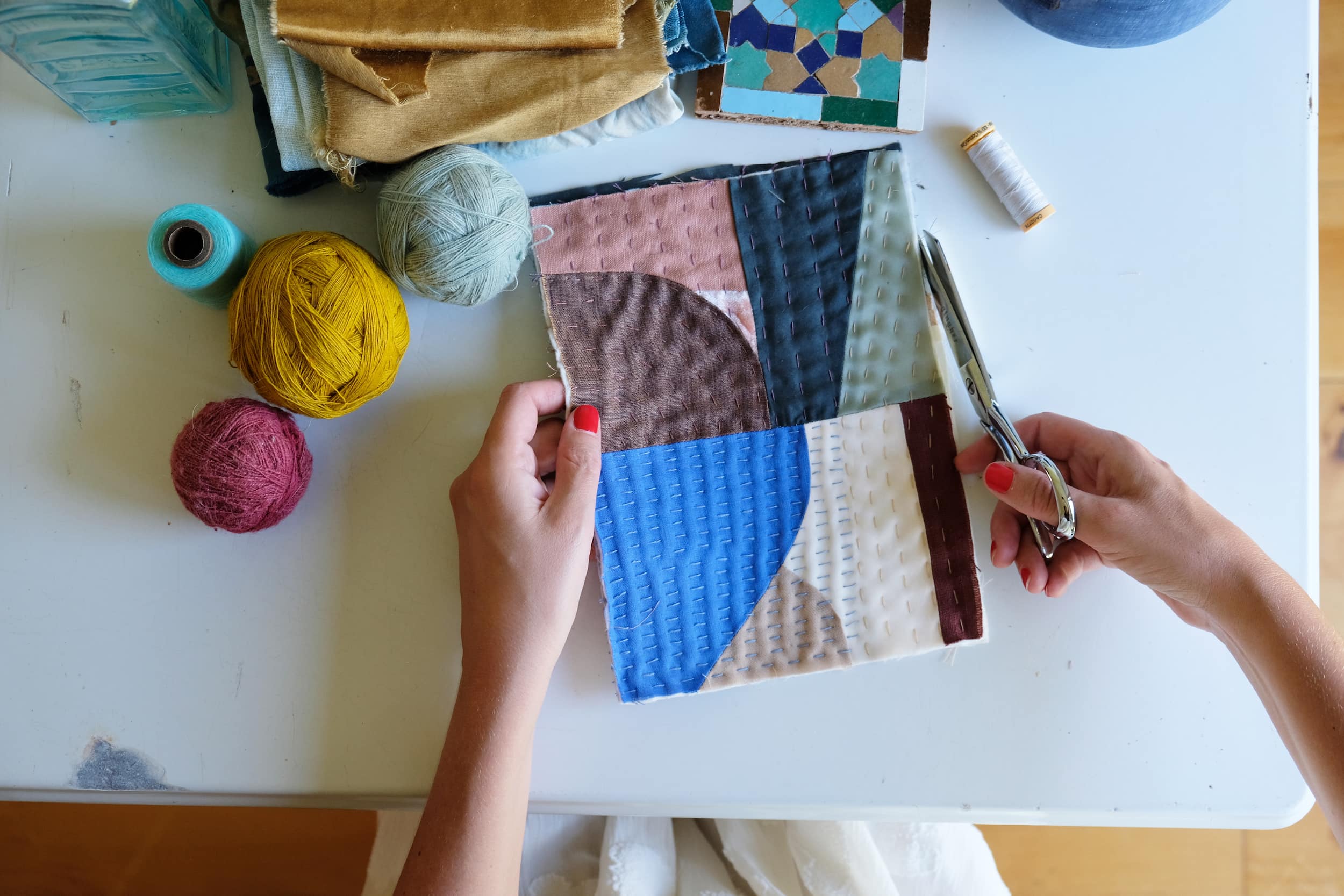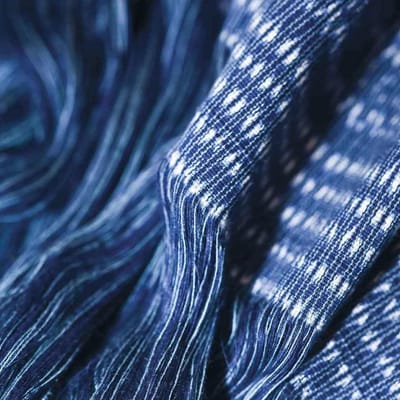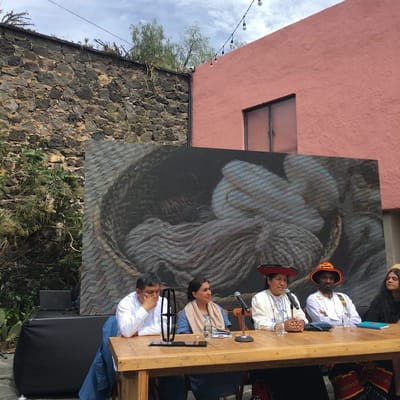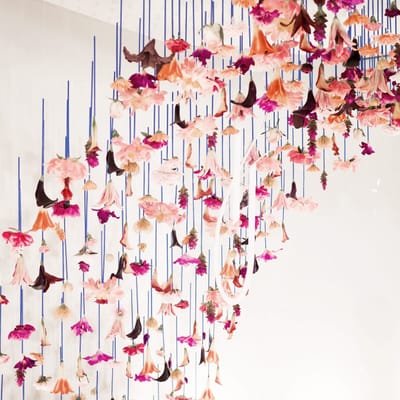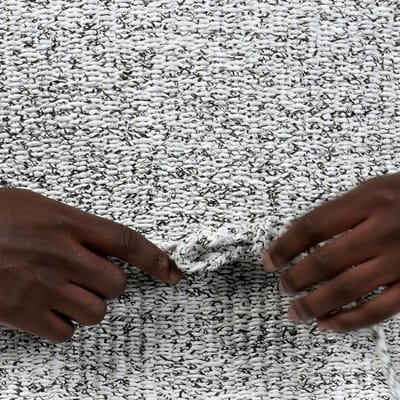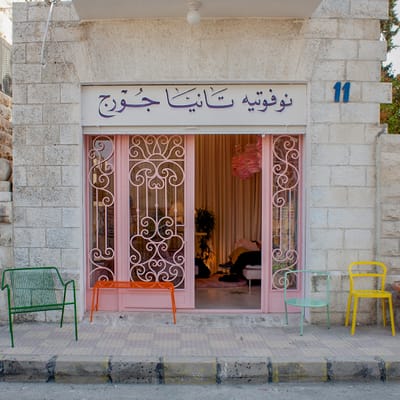New York Textile Month, a city-wide festival to celebrate textile creativity, completed its fourth edition in September 2019. Presented by trend forecaster Lidewij Edelkoort and Parsons School of Design, the event included hundreds of exhibitions, conferences, workshops, and open studios.
For this edit of NYTM’s notable events, THE KINDCRAFT asked several contributors to share their impressions of the events they attended. We’ve also added our own selections to this round-up, including exhibitions and events from Manhattan, the Hudson River Valley, and Brooklyn.
Phenomenal Nature: Mrinalini Mukherjee at The Met Breuer
The Met Breuer’s exhibition Phenomenal Nature is an arresting display of knotted rope works and clay sculptures by the Indian master Mrinalini Mukherjee (1949–2015).
Mukherjee’s ingenious practice represents a powerful craft intervention: She worked with a range of materials — fiber, jute, cotton, clay and bronze — and with self-invented methods like knotting and weaving without a loom. Although a feminist fiber art movement was emerging in the West during her lifetime, Mukherjee was not in dialogue with it. Working mostly in isolation, her singular visual vocabulary set her work apart from the modality of figurative painting dominant in India during her career.
Fertility deities, pre-Hindu mythical forms, folk art, modern design, and local craft all informed an extraordinary process and mysterious expression for Mukherjee. The results were jaw-dropping: vegetal, exquisite creatures, rising from an interplay of textile traditions, figuration and abstraction and, most of all, a divine interconnection to the natural world.
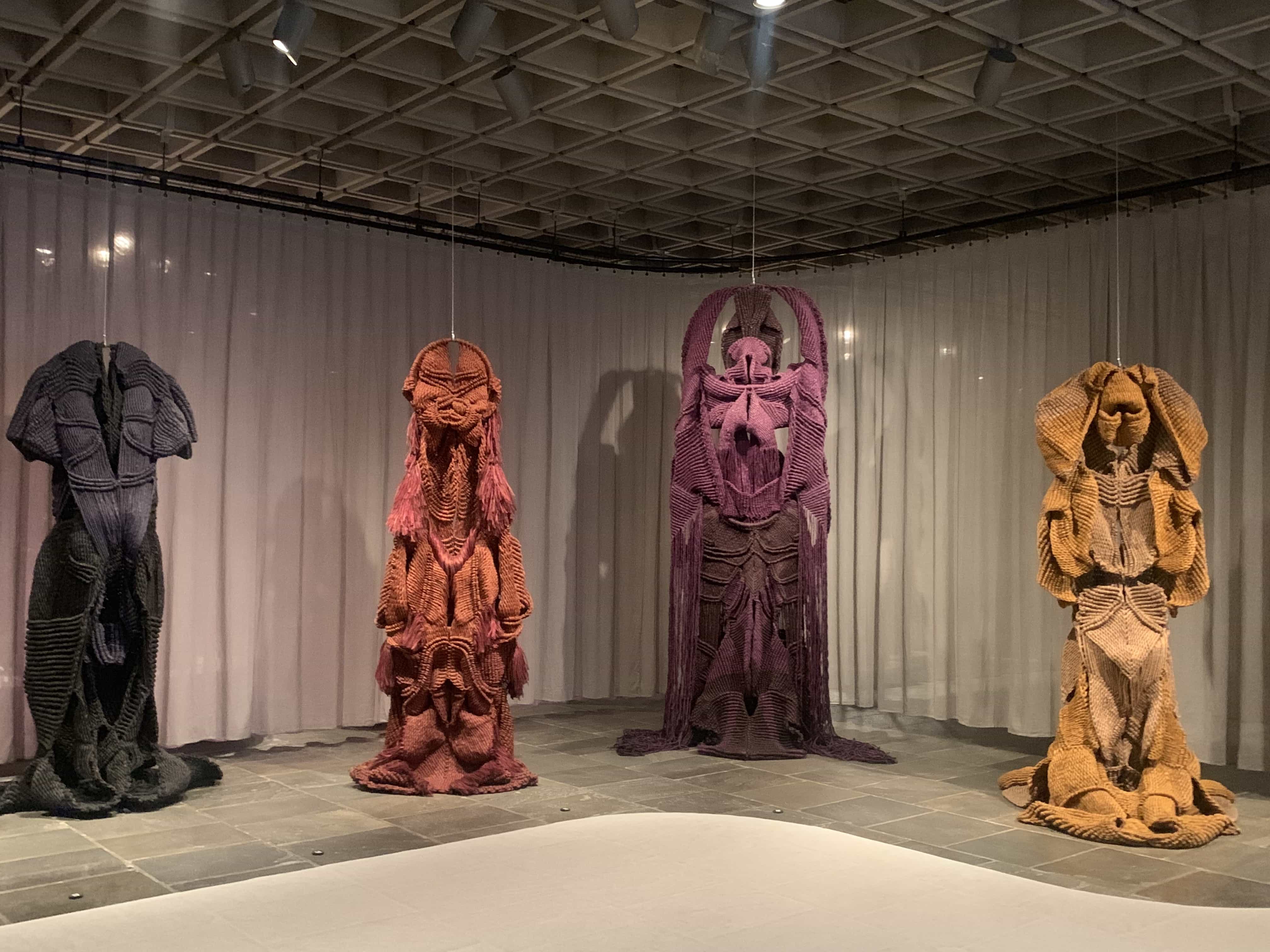


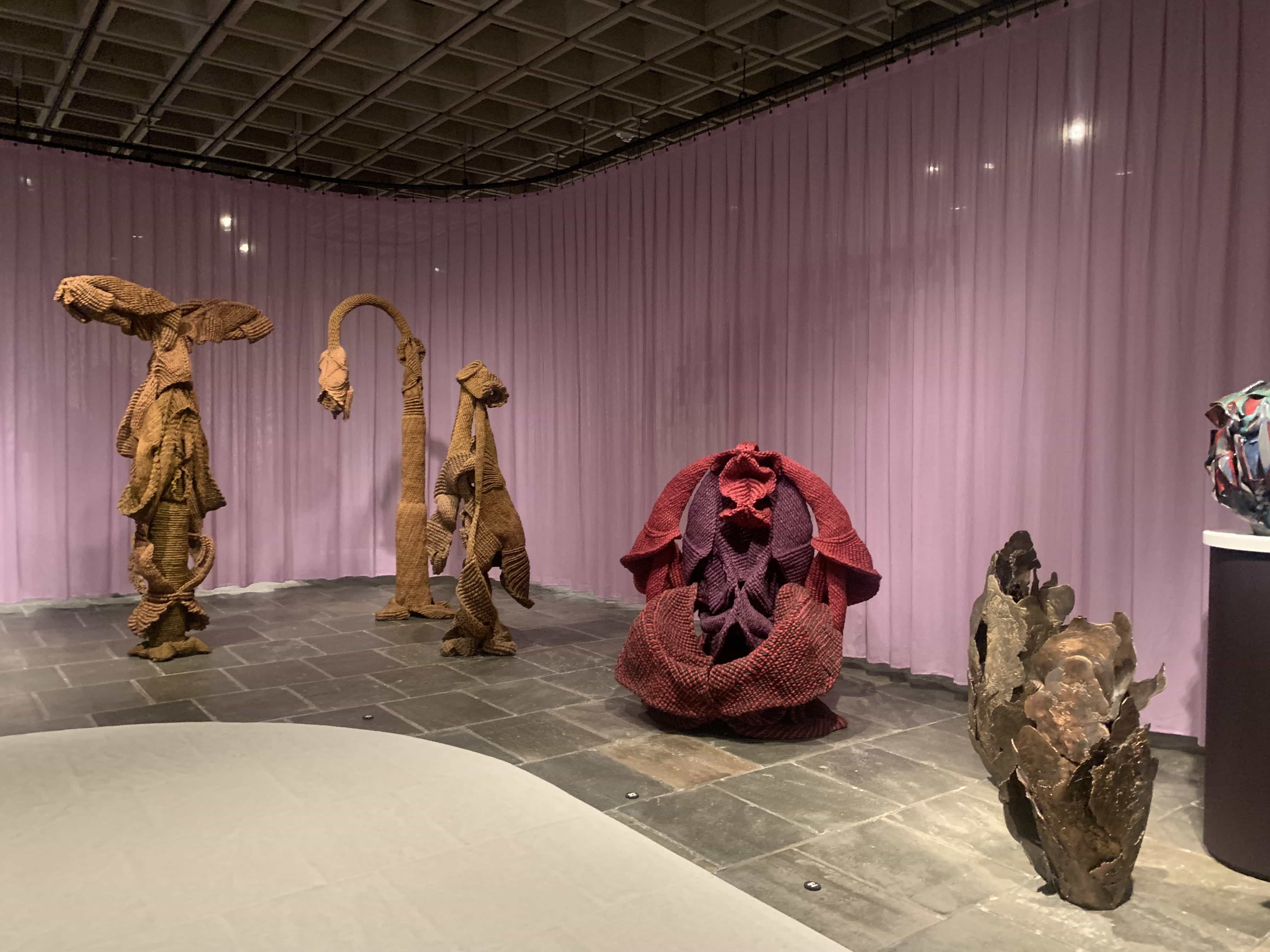
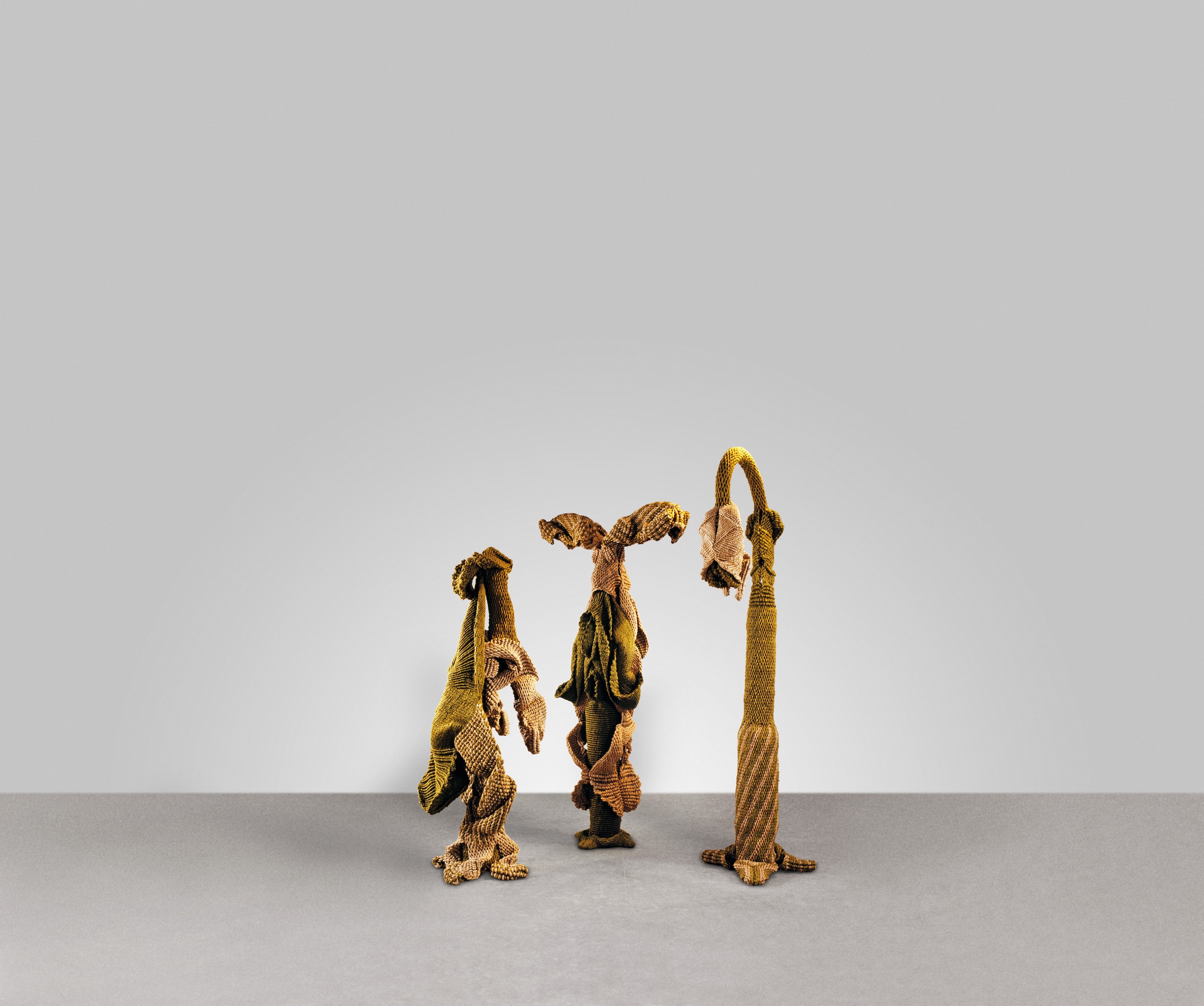
“Squirrel”, a mysterious brown-toned wall hanging with a crocheted head and carpet brushed body displayed at the entrance of Phenomenal Nature, sets the tone for the rest of the visit. Dim lights and grey walls offer a somber setting against which the wall and ceiling hangings come to life. Colors and forms pop. Rich vegetal tones — mustards, greens, coppers, and rich maroons — flood the room. They appear to be vegetable-based but are, in fact, synthetic — a choice Mukherjee made to gain control and precision. As we continue to look, we can make out body parts, knotted noses, anatomy, leaves, until we are greeted with forms midway between plant and animal, myth and reality, carcass and life. Each piece is a visual journey unto itself: The red “Pari” (Nymph) has multiple folds and crevices, limbs and, maybe, even a shield around a beating heart. At the same time, she is hung from the ceiling like a carcass.

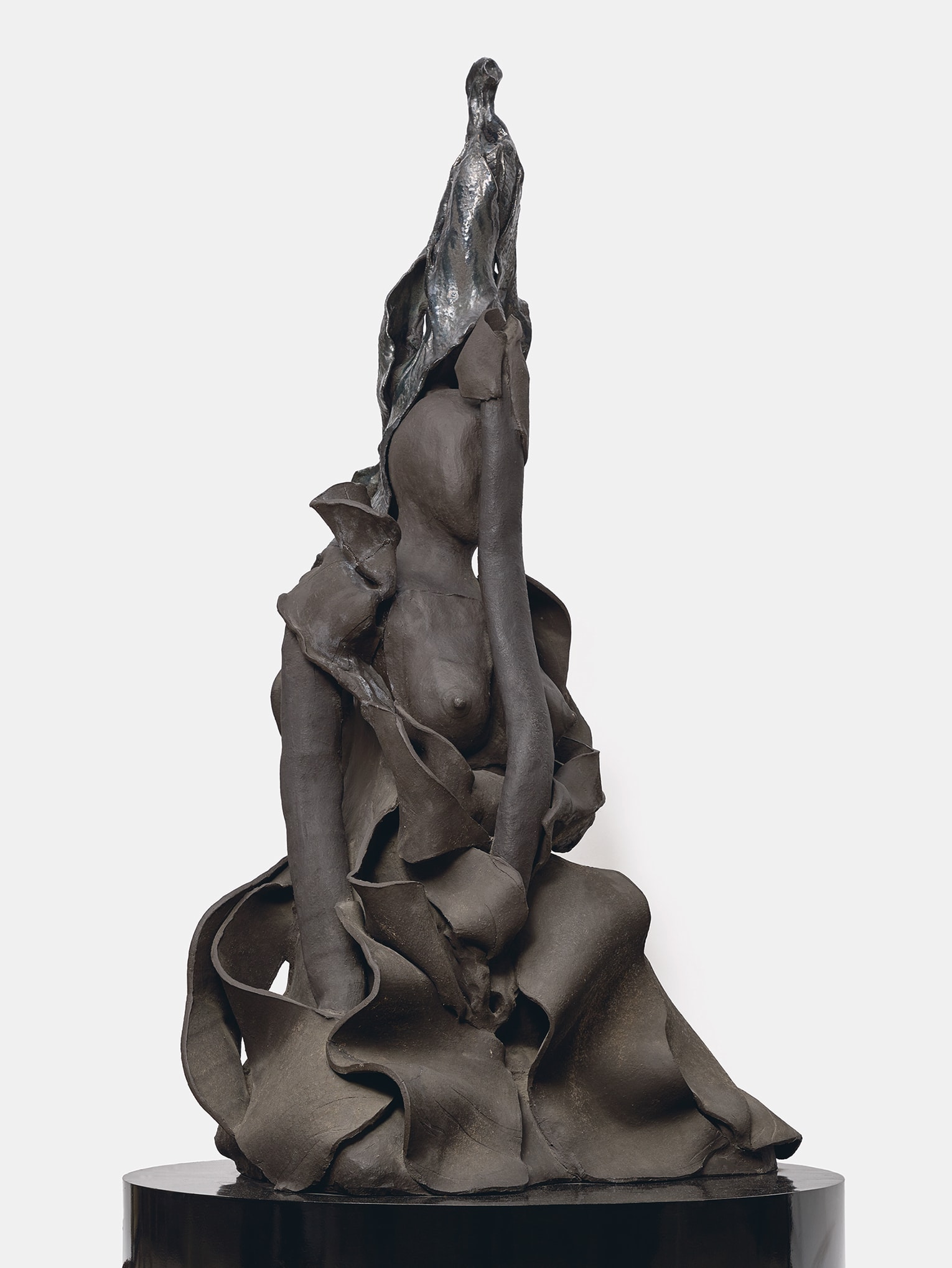
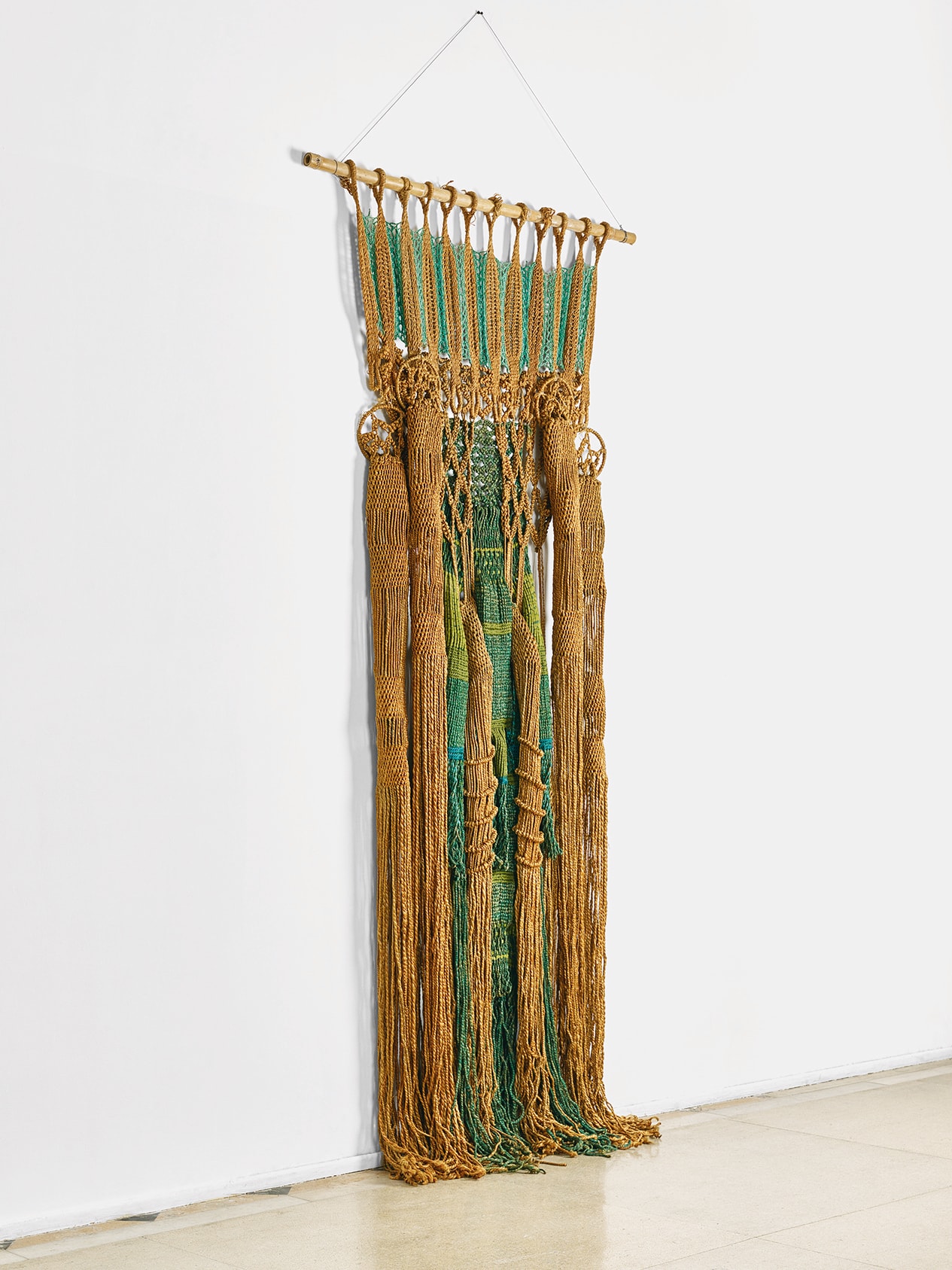
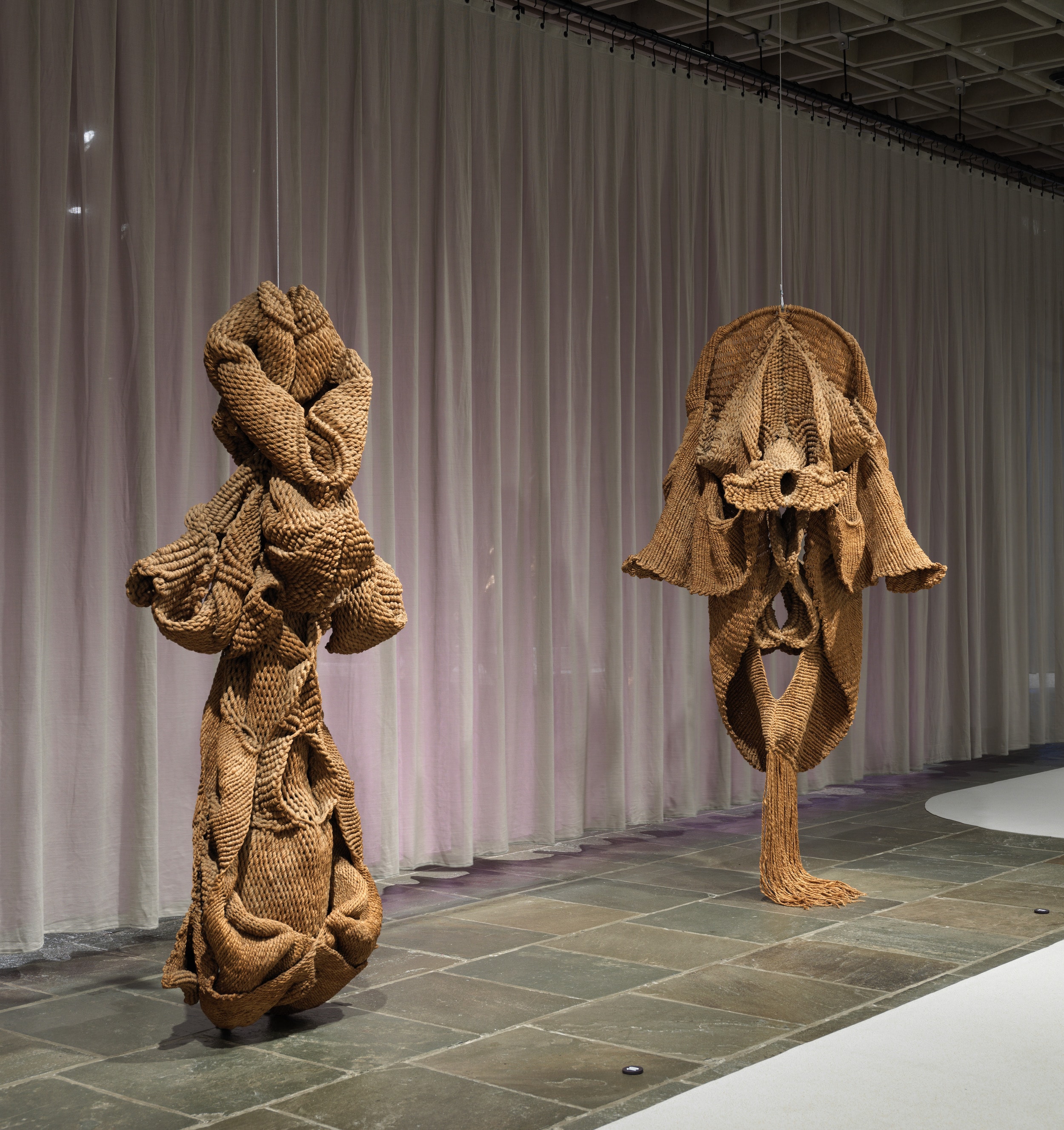
Wandering through Phenomenal Nature felt likewalking through an other-worldly plain: Knotted villagers, branches dripping with heavy fruit, gesturing limbs, braided feet, ceramic flaps — or the elegant robes and wings of elders and ancestors, each one greeting you with a different story. Mrinali Mukherjee was a genius at reminding us that life is mournful and alive — with indents of loss and longing and, at the same time, with caverns filled with fecundity and life.
— Contributed by Fariba Salma Alam, a visual artist and founder of Leyli.
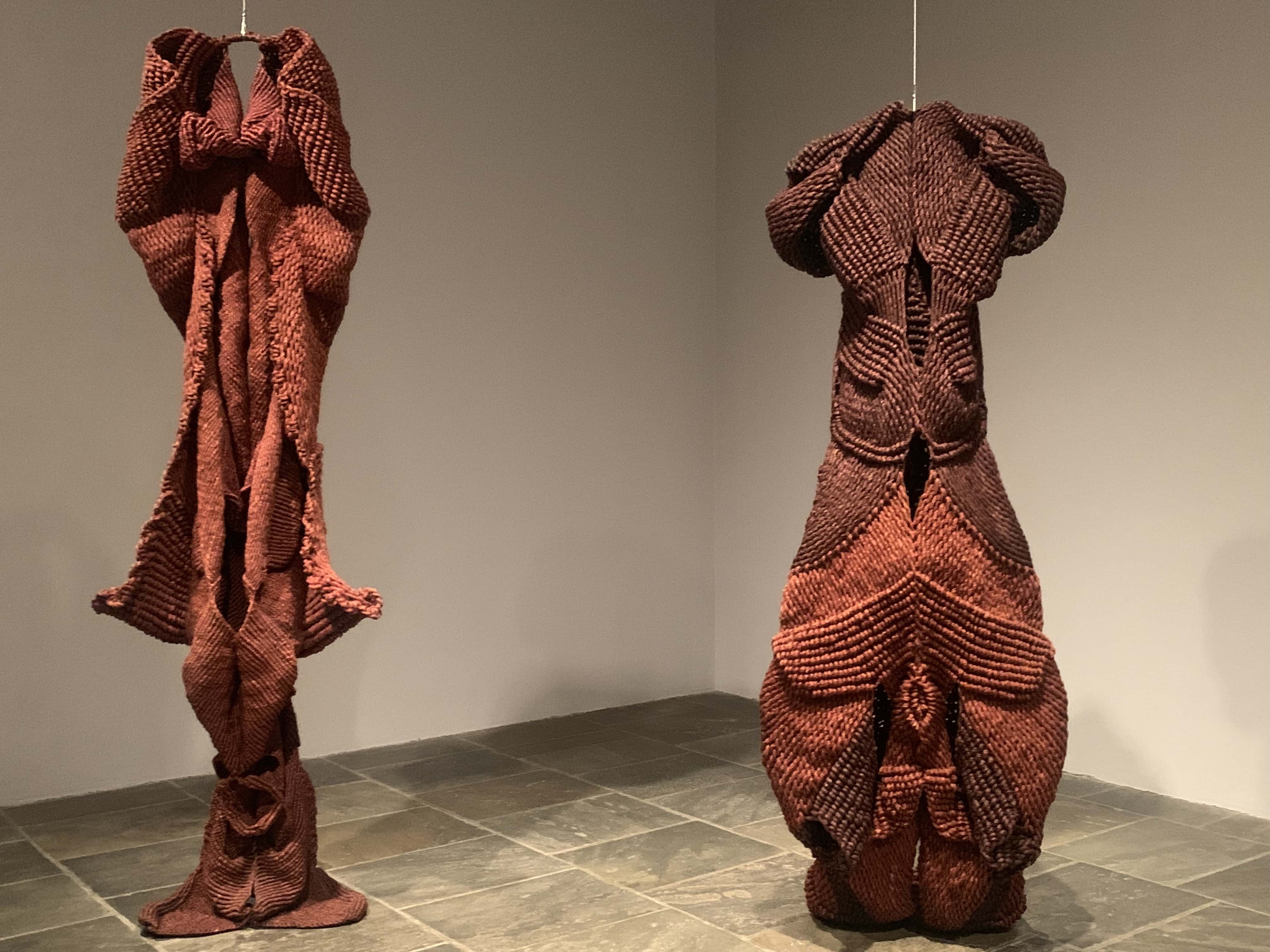
Textile Conservation Colloquium at The Met
The Met hosted a colloquium on September 20th to share recent research and the discoveries of textile conservators. The day began with a study of silk production in Japan by conservator Minsun Hwang, who showcased new technologies including the mechanization of pulling silk fibers from cocoons.
The morning program included sessions about conserving precious tapestries and exploring applications for new technologies, while the afternoon was devoted entirely to traditional South Asian block printing.
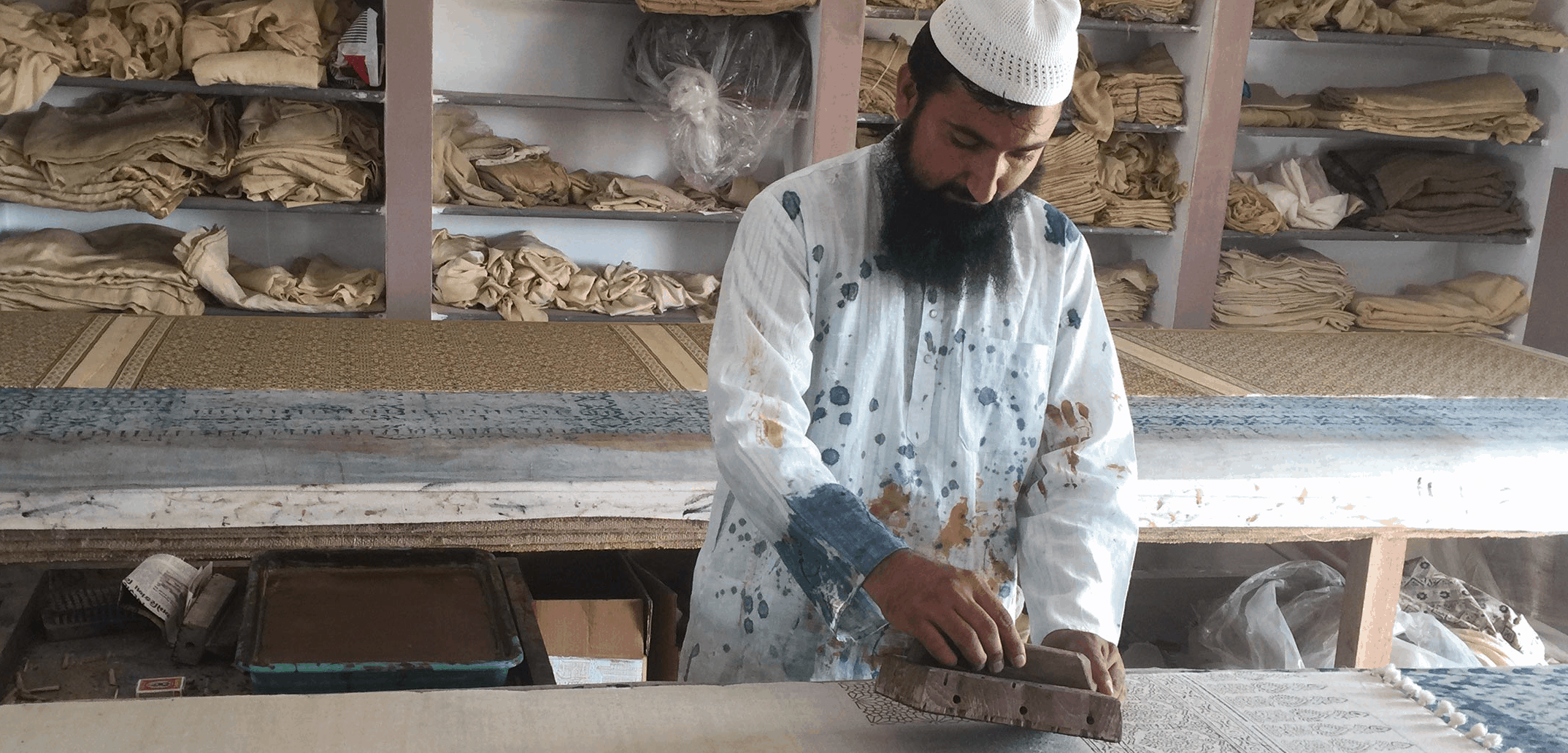
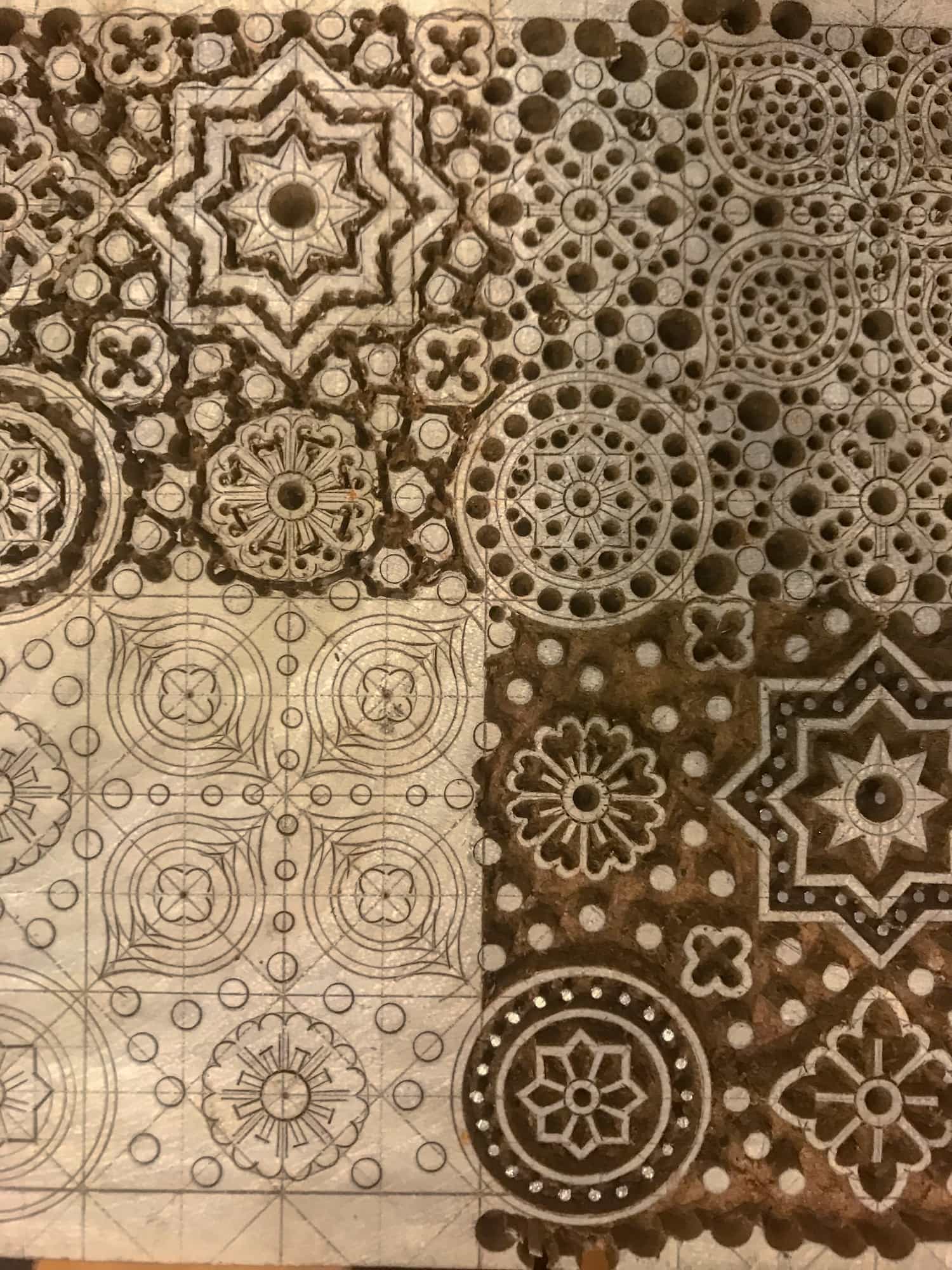
Department of Textile Conservation volunteer Yael Rosenfield recounted her recent trip to India to study printed and painted cotton textiles and introduced Sufiyan Ismail Khatri to the audience. A renowned 10th generation Ajrakh artisan, Khatri described the origin of Ajrakh textiles. He also spoke about the printing process, the natural materials he uses, and the many challenges his family has faced over the years in keeping their tradition alive. Khatri then demonstrated the printing process and invited attendees to block print a piece of cotton themselves.
Contributed by Kristen Robinson and Sara Luduena, Students of Fashion Institute of Technology (FIT)
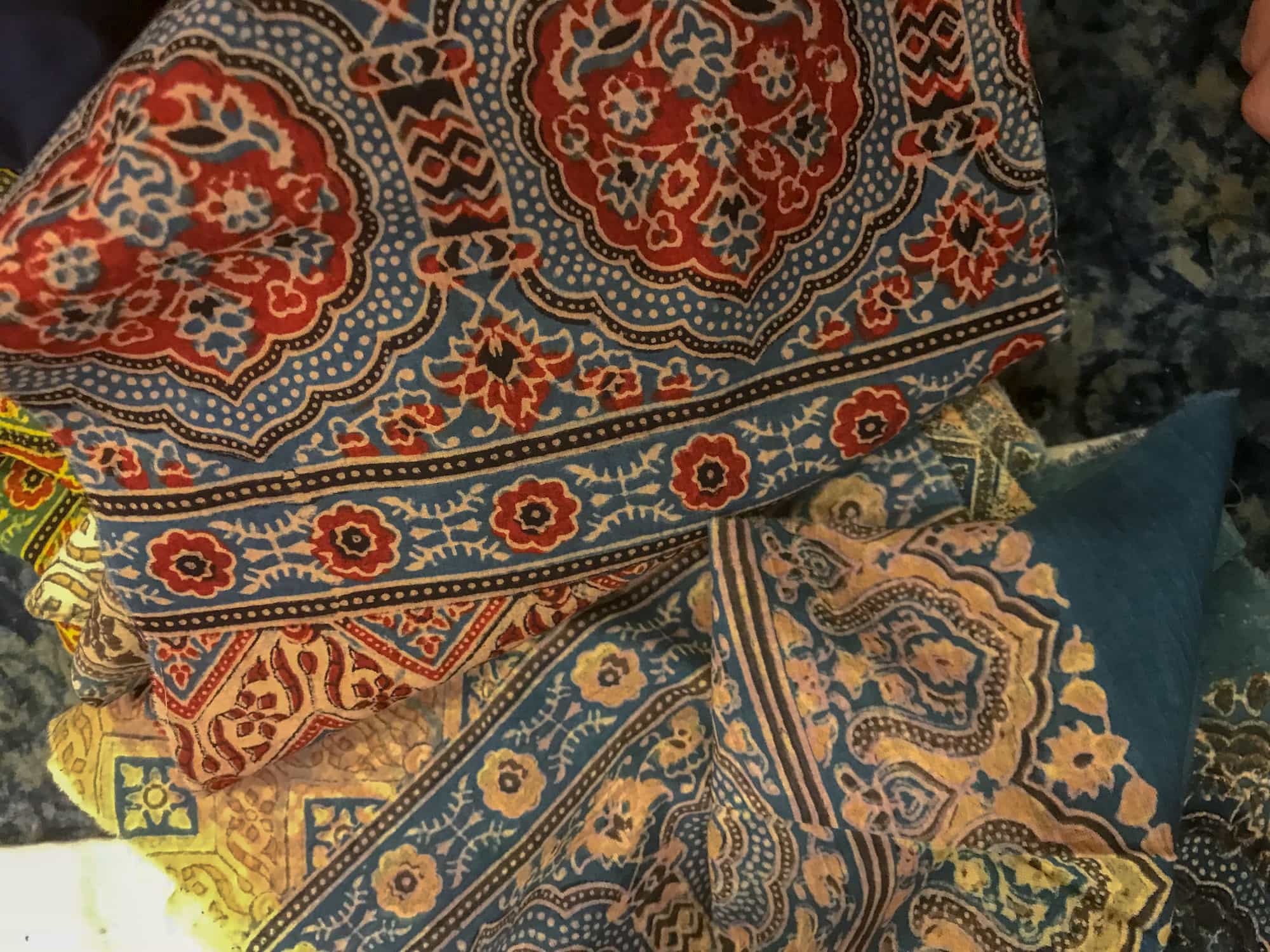
Belgium is Design: Textiles Revealed
Belgium is Design presented Textiles Revealed, an exhibition of 11 contemporary Belgian textile designers at Unix Gallery in Manhattan. It was the group’s first show in the United States — and their first exhibition focused exclusively on textiles — displayed a range of installations, sustainable furniture, wall hangings, and textural rugs.
Li Edelkoort, who curated the show with Creative Director Philip Fimmano, offered additional context to the works featured in the exhibit: “The exhibition upends preconceived notions of traditional Belgian textiles – often limited to the country’s centuries-old linen heritage – instead unraveling an exciting thread among designers from the region. Tufting, felting, digital jacquards and coiling are just some of the techniques employed by a new generation redefining the boundaries of textile creativity.”
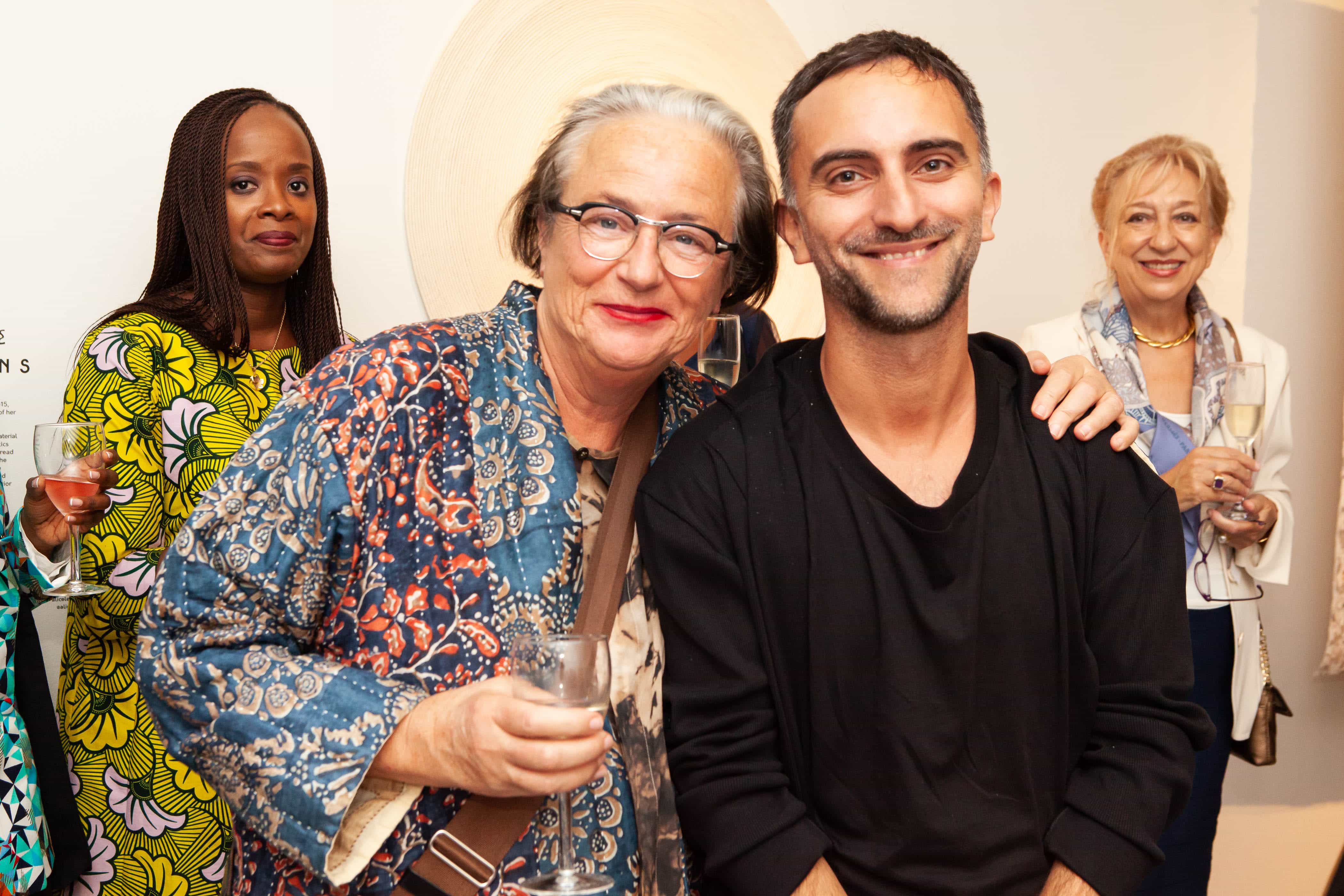
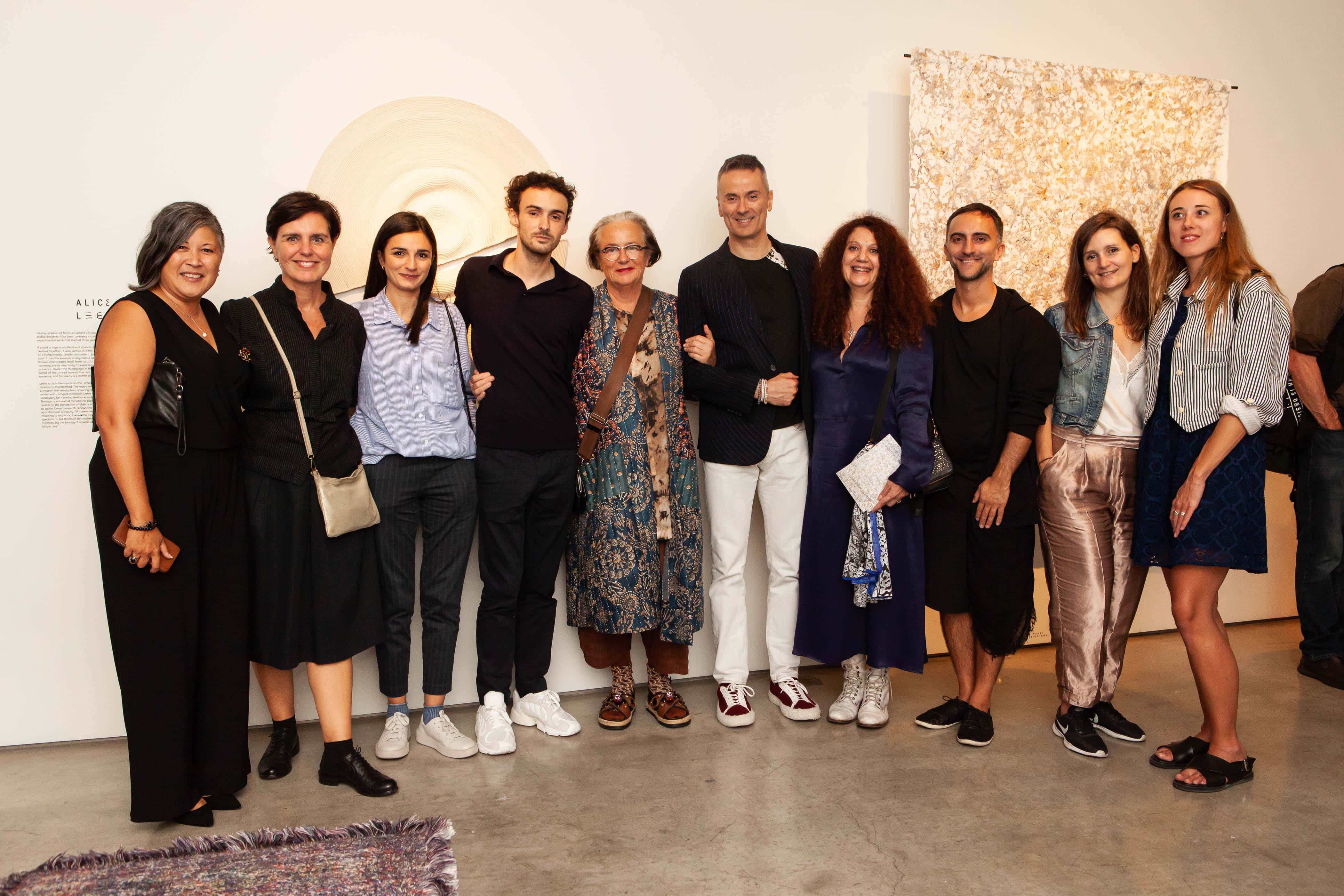
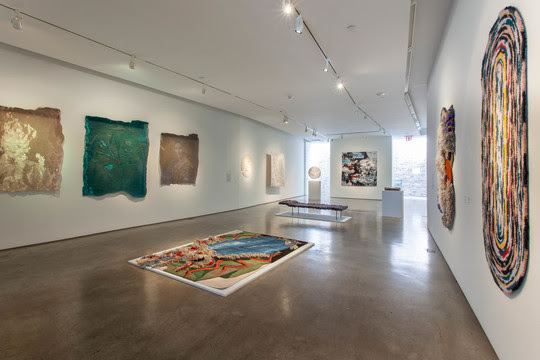

Photos courtesy of NYTM.
Alice Leens
The heart of Alice Leens’ work is thread — the humble foundation of any textile — juxtaposing its role within a textile object against how it exists in isolation. Leens’s work brings to light the minute workings of an everyday element and says she hopes it makes viewers pause and reflect: “If it were necessary to give meaning to my work, it would be this one: to allow the spectator to let themselfbe touched, even if only for a moment, by the beauty of a banal object that they no longer see.”
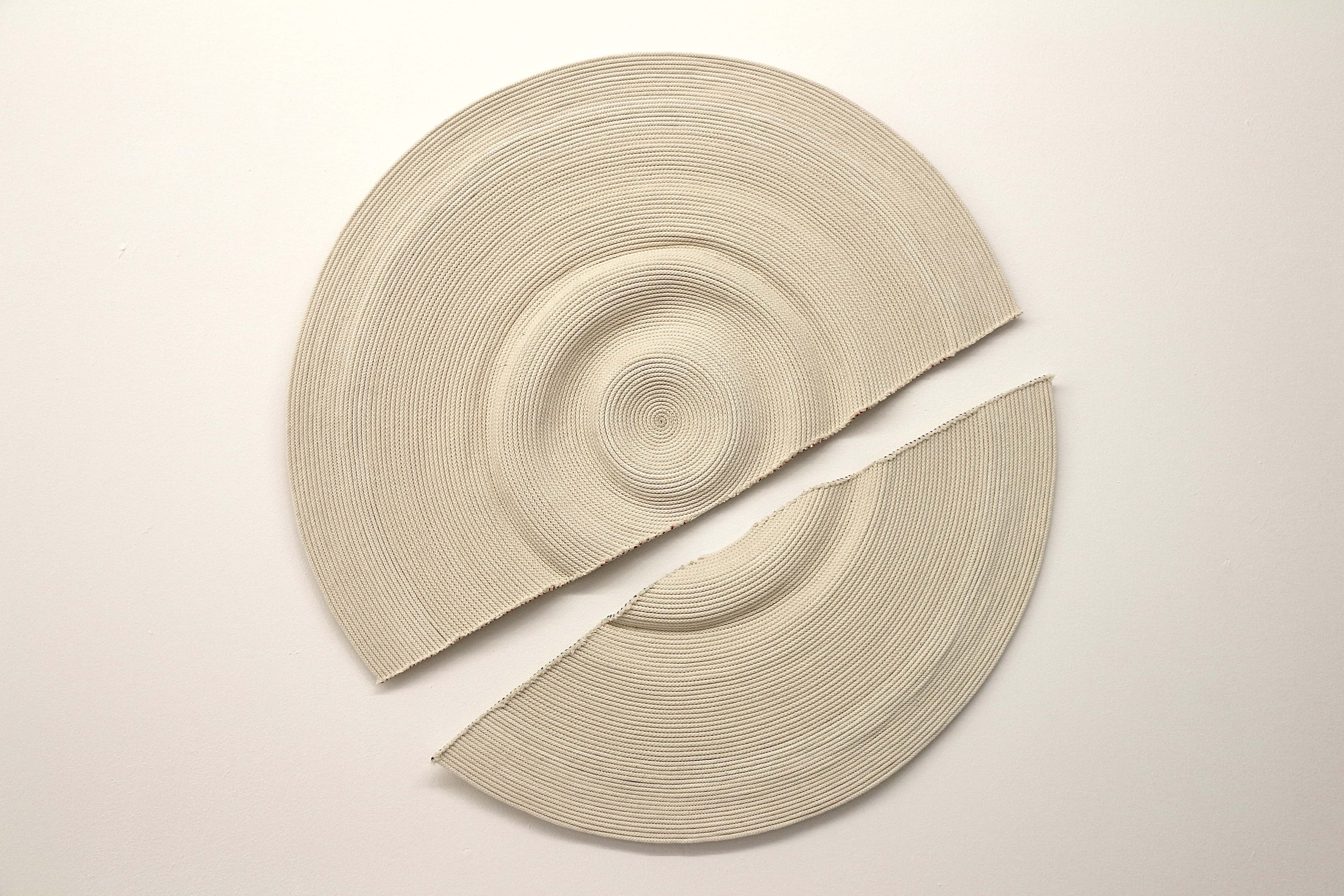
Alice Leens. Photos courtesy of NYTM.
BedrossianServaes (Flavien Servaes and Ani Bedrossian)
Based in Belgian tapestry techniques, these hanging pieces were created by a 2016-2017 collaboration between Flavien Servaes and Ani Bedrossian. The works — transforming cotton, wool, linen, and mohair into beguiling and colorful portals leading to undefined worlds — invite physical interaction and can be displayed opened or closed, enhancing the tactile experience.
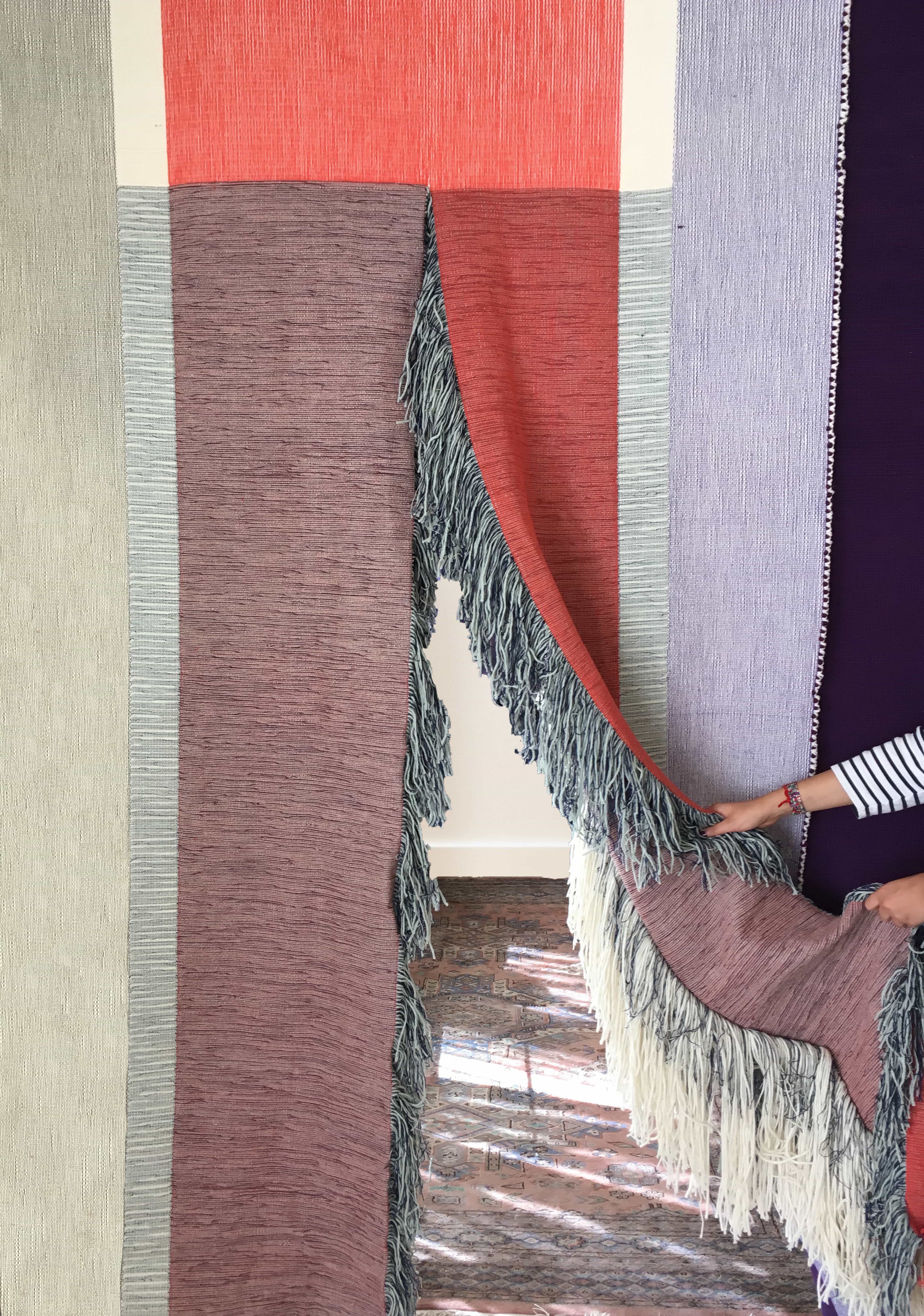
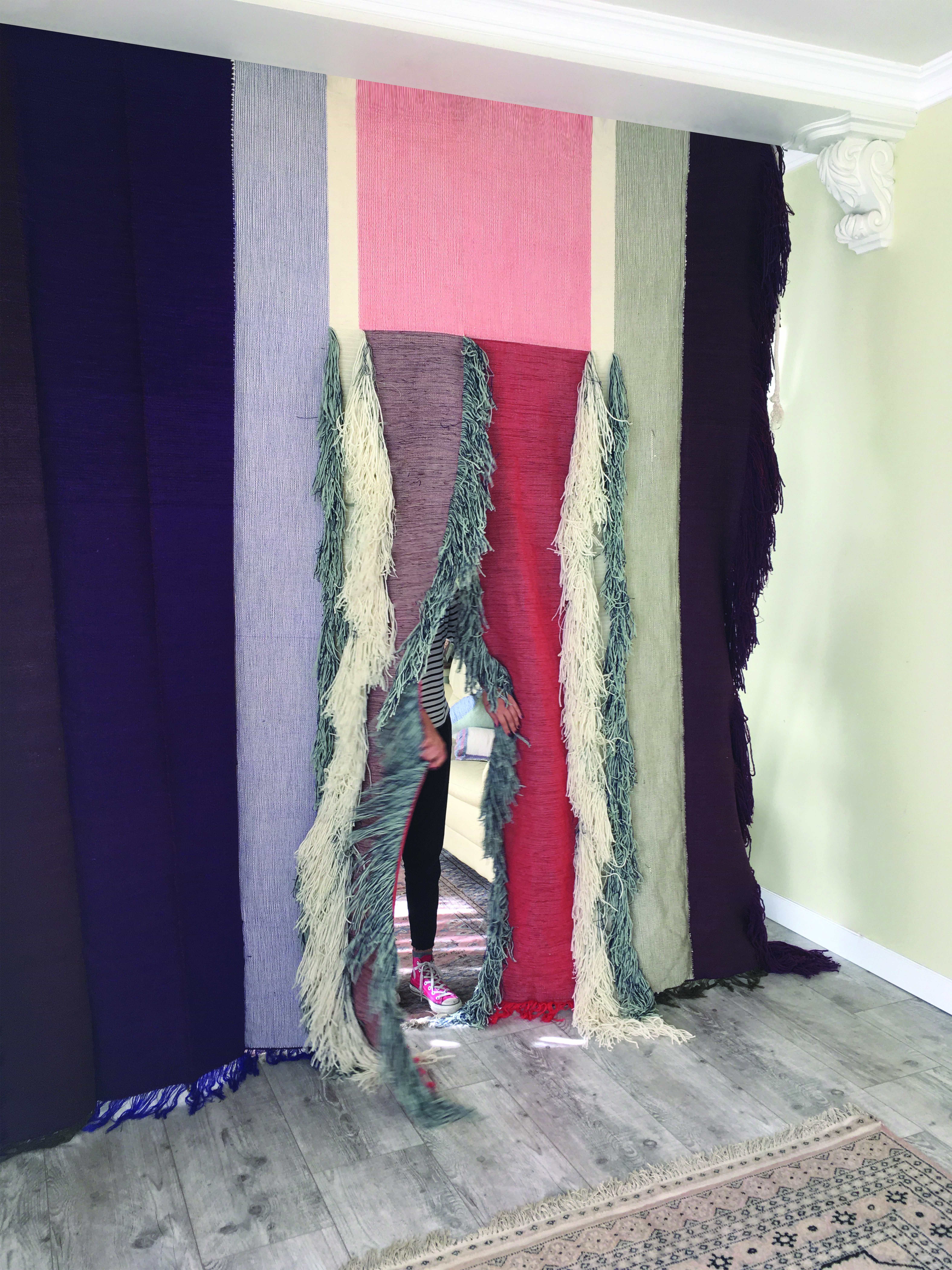
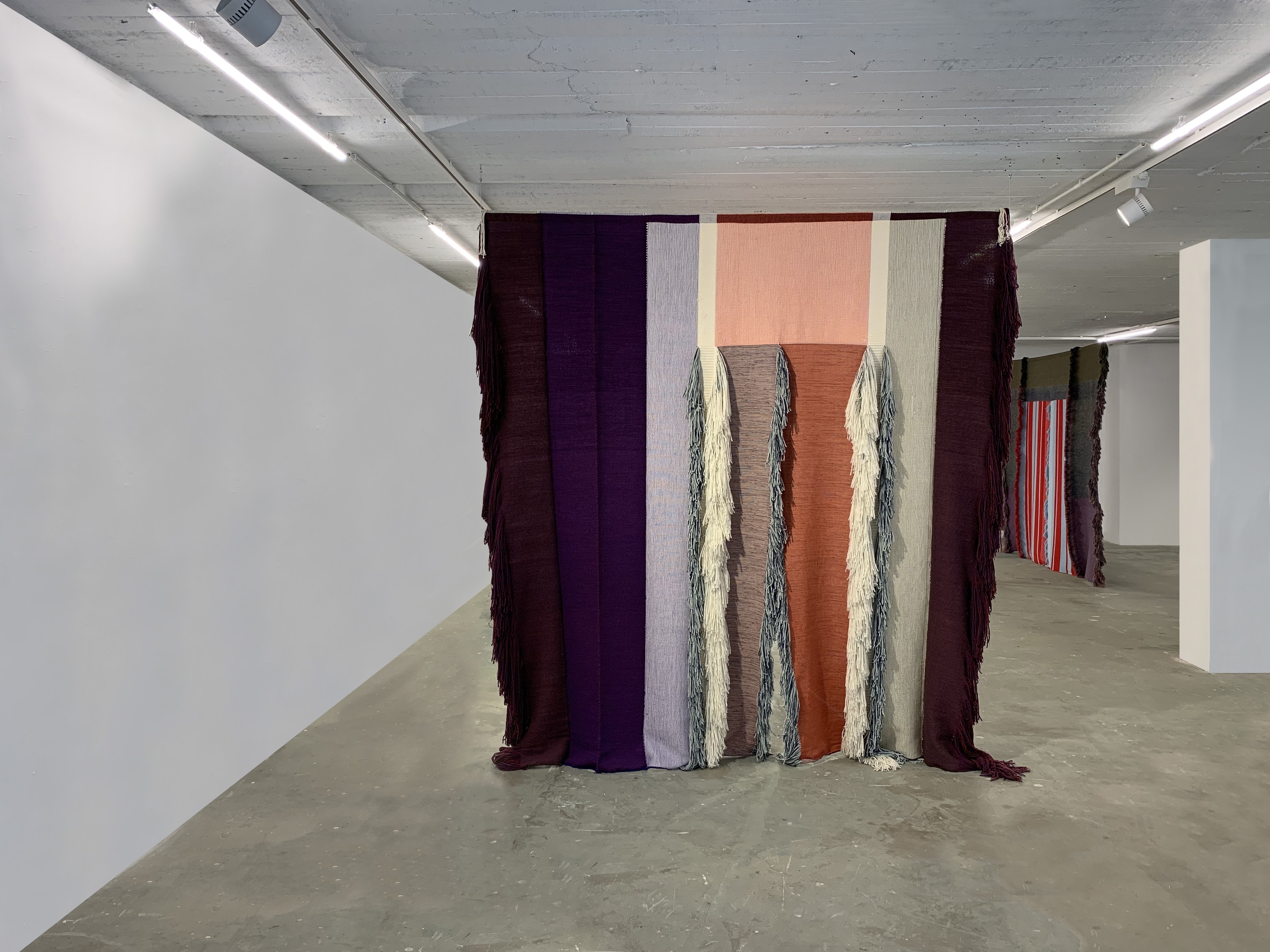
Chevalier Masson and Diane Steverlynck
Chevalier Masson presented the Tapa Daybed, a steel bench covered by a thick, double-sided felt, and the Tapa Cushion II. These objects were made from waste fibers collected from a local Belgian weaving mill, demonstrating the designer's commitment to working with discarded materials.
The Court Circuit rugs were designed by Chevalier Masson and Diane Steverlynck. Their oval-shape and colorful palettes give an energy that's reminiscent of a high-speed race car track.
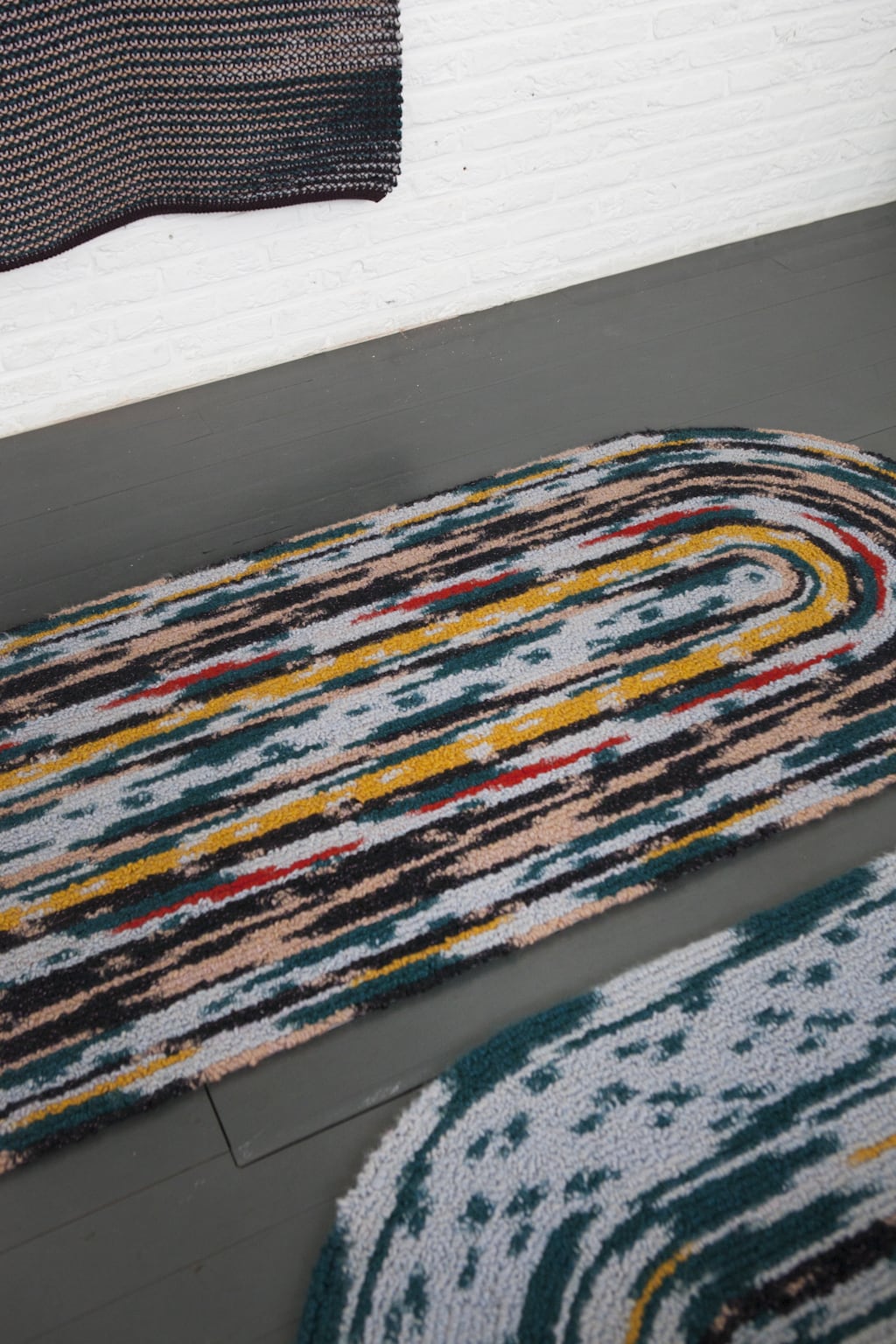
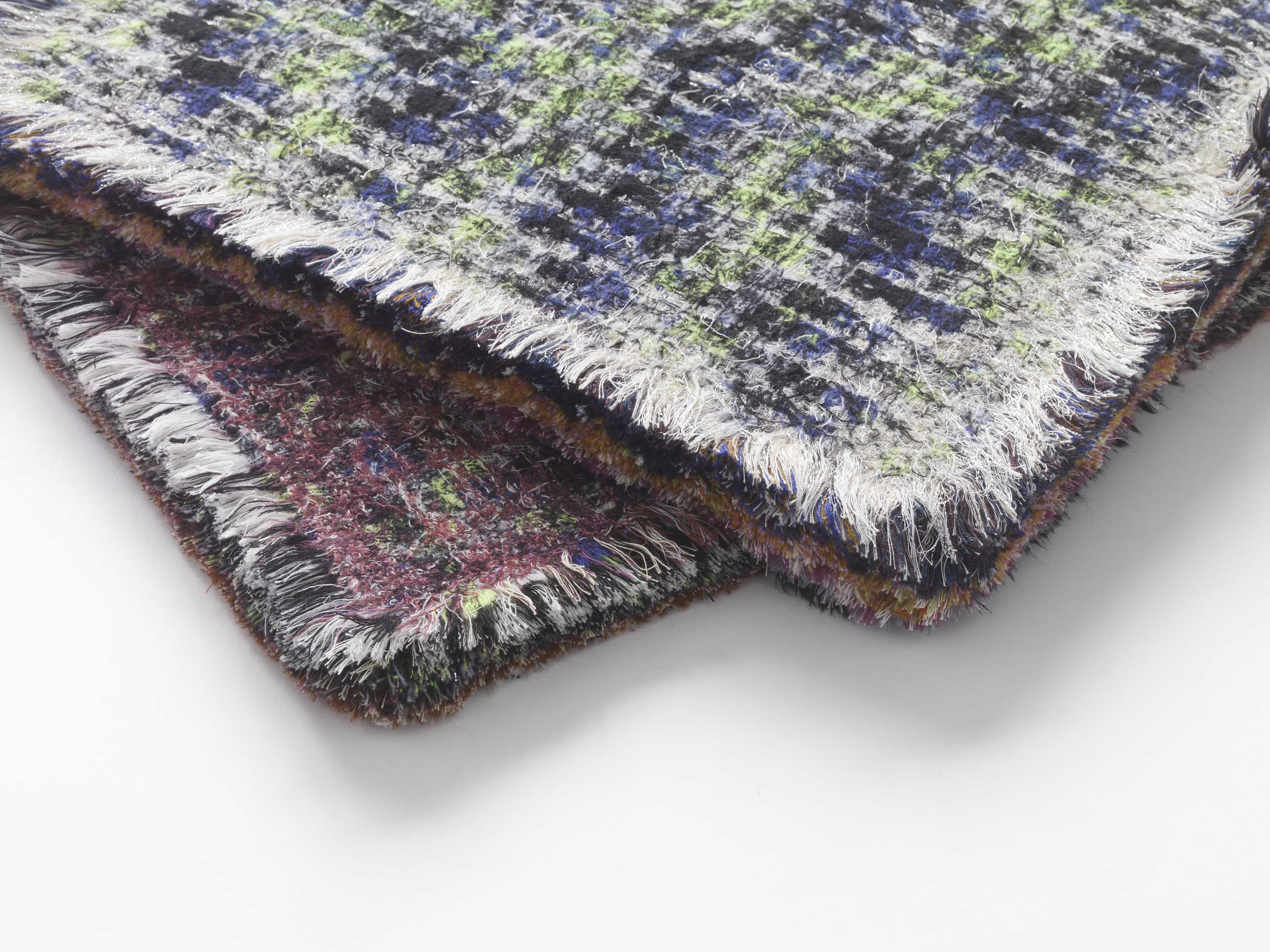
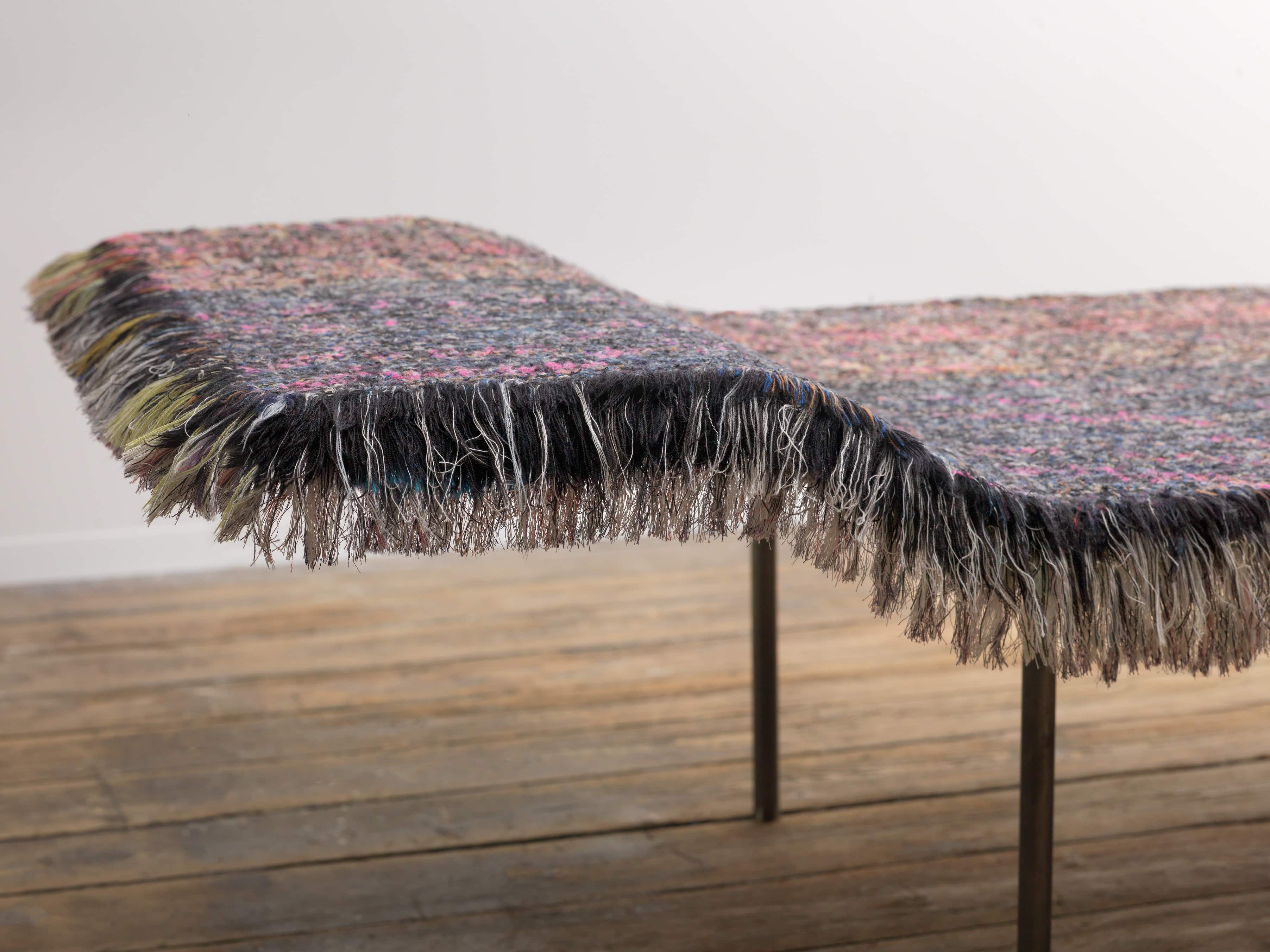
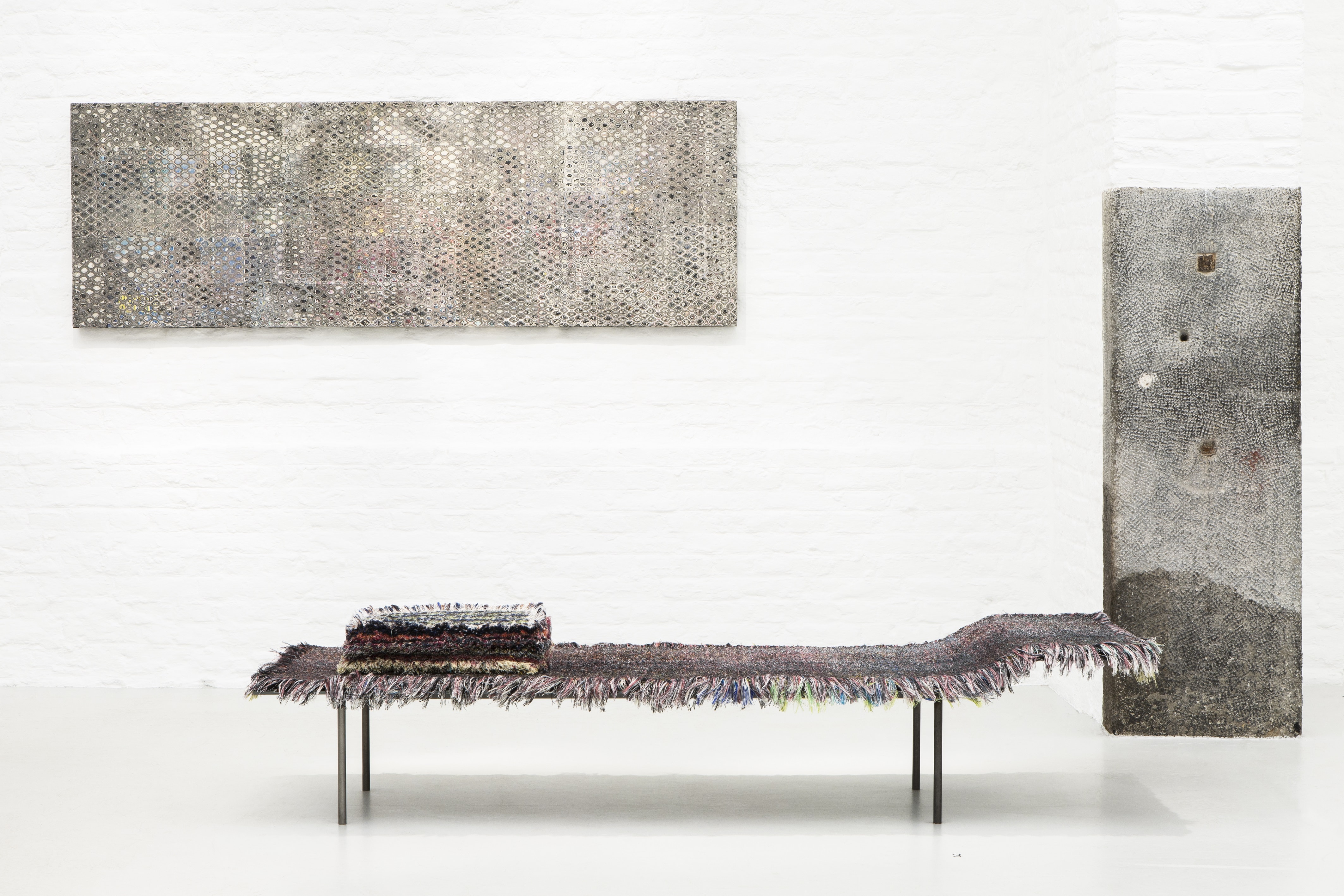
Chevalier Masson and Diane Steverlynck. Photos courtesy of NYTM.
Christoph Hefti
A graduate of Central Saint Martins and a textile designer for Dries Van Noten, Balenciaga, and Acne, Hefti is focused on crafted textiles. He spends time in Nepal where his works are hand-knotted. Through his visits there, he says he's "rediscovered the direct interaction between the designer and the craftsman and became fascinated by the use of traditional crafts in a contemporary context." Hefti’s passion for mystical and spiritual storytelling is clearly communicated by his textiles, alternately inhabiting both a worldly and personal point-of-view.
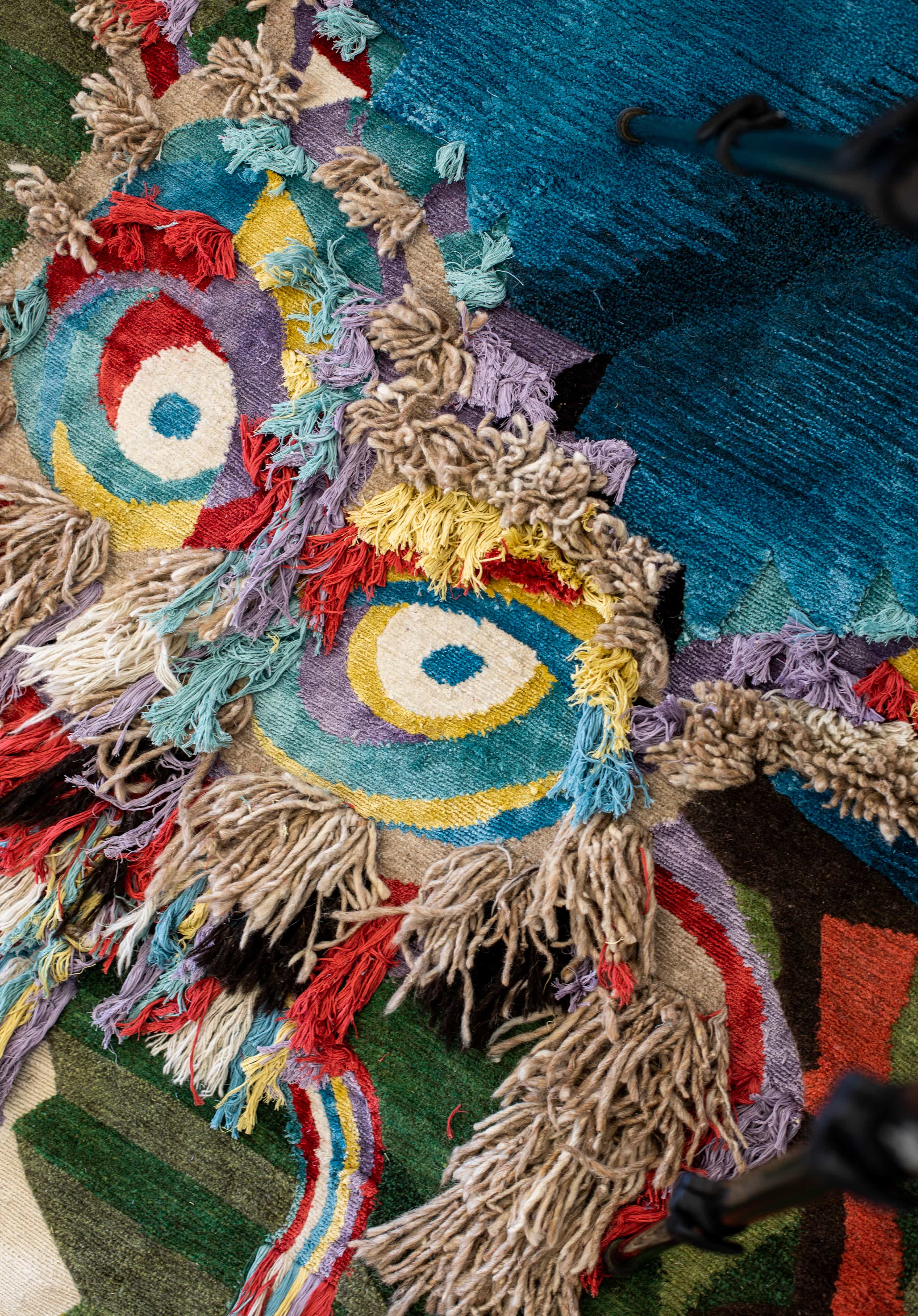
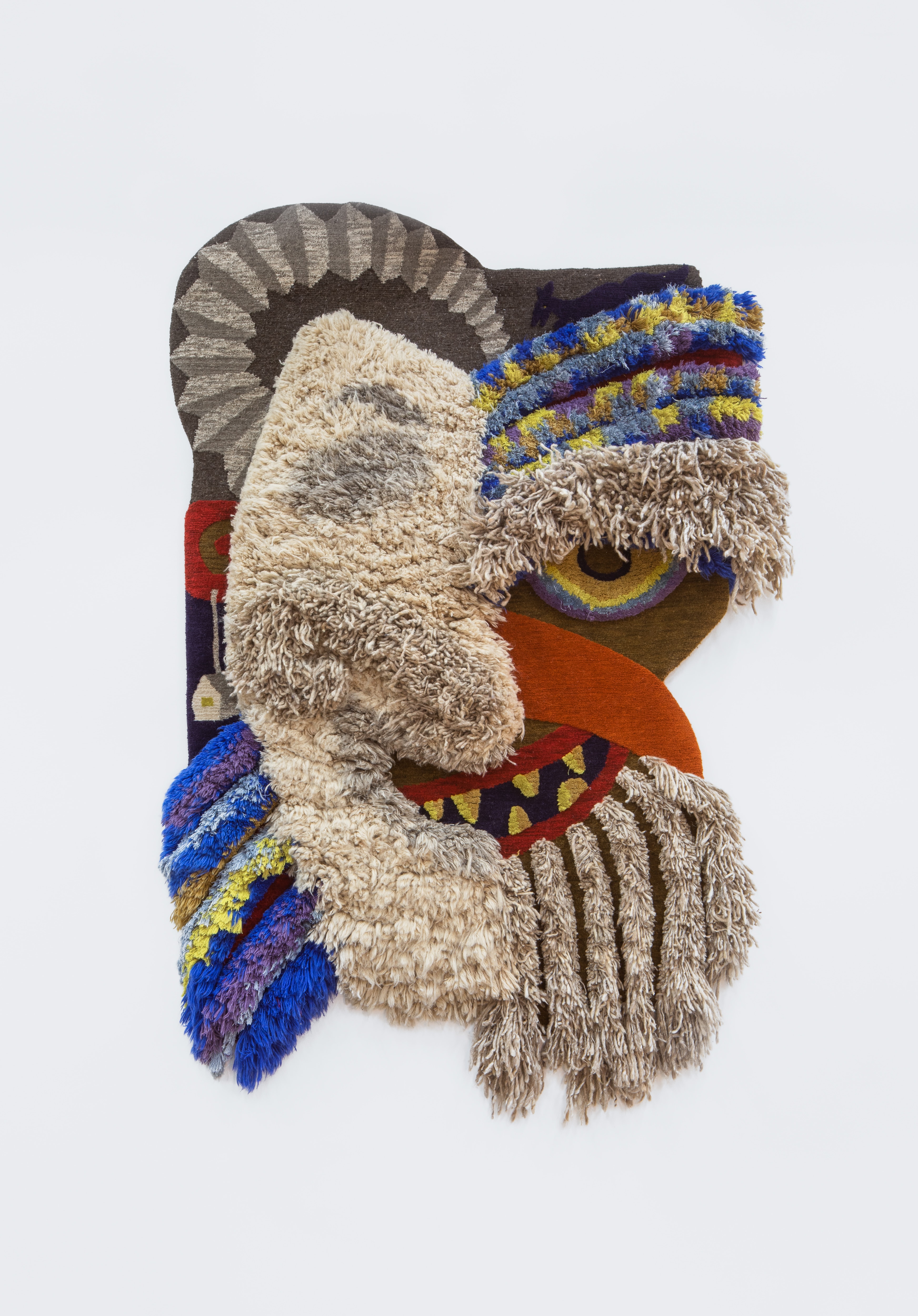
Christoph Hefti. Photos courtesy of NYTM.
Geneviève Levivier
Two Eggshell Alchemy collection pieces by Geneviève Levivier were on view at NYTM: One is a recto-verso open-work tapestry, the other is a circular translucent textile sculpture. The collection was made with biodegradable PLA (from beetroot and corn starch), eggshells (collected from a local patisserie), natural flowers (collected and preserved by Levivier), tulle, and other eco-friendly polymers. The artist's lab-like studio employs a chemist for R&D and uses organic material, pigments, eco-friendly (and self-invented) paint binders, and bio-sourced fibers. Her work combines personal innovative technologies and artistic sensibilities.
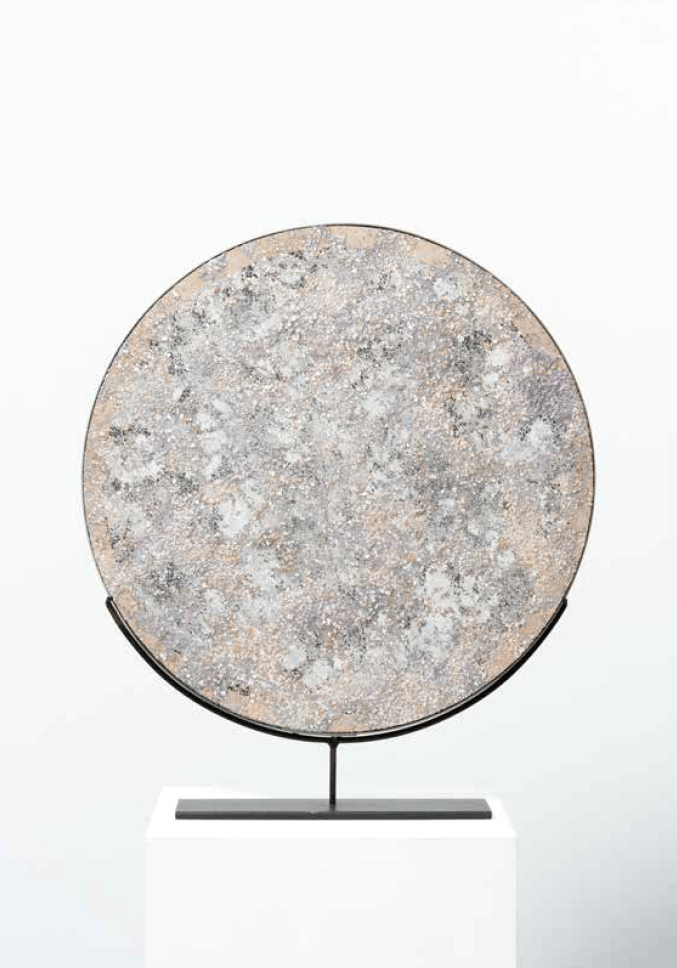
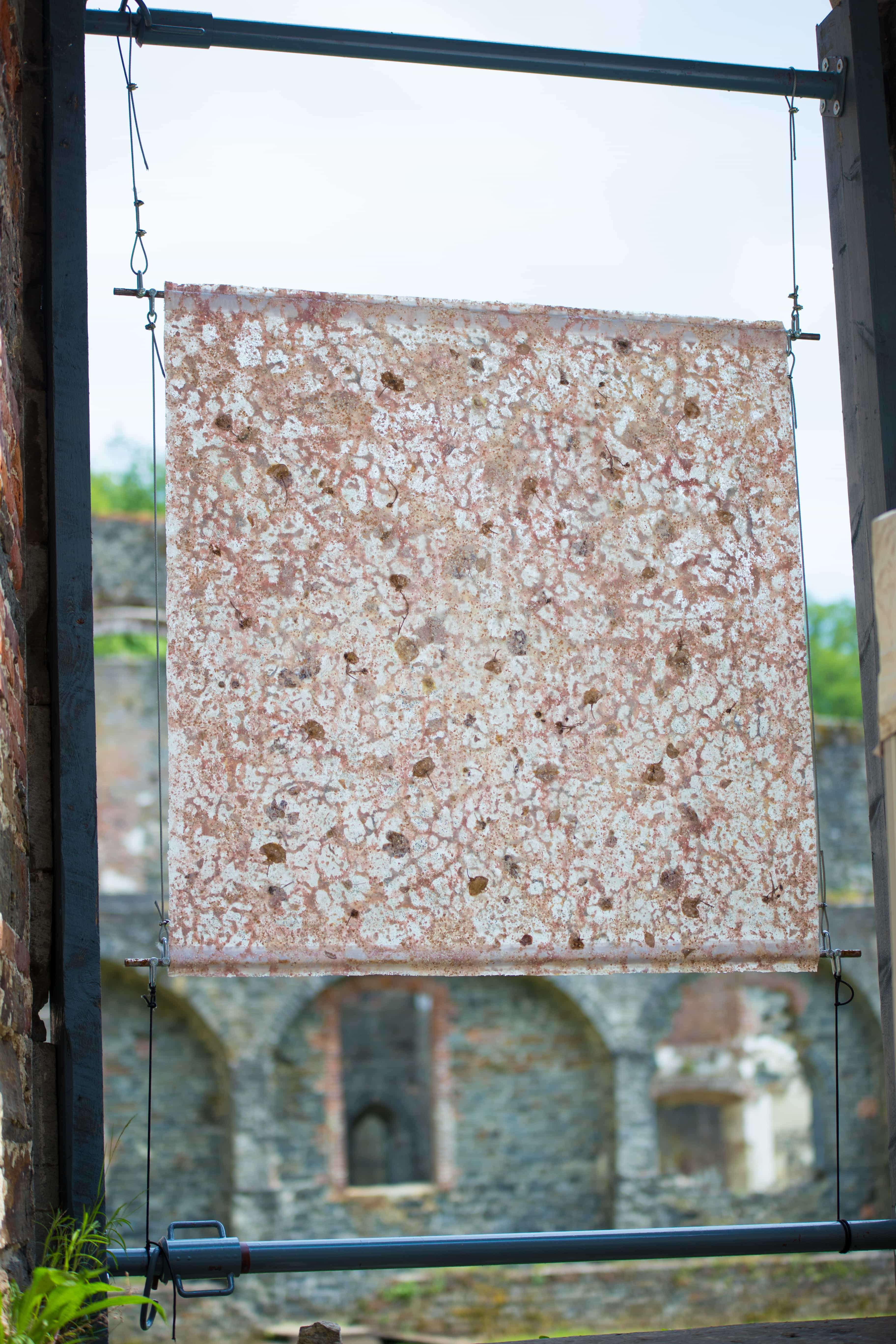
Geneviève Levivier. Photos courtesy of NYTM.
Krjst Studio: Justine de Moriamé and Erika Schillebeeckx
The dramatic, stormy tapestries of Krjst Studios are created through jacquard weaving and hand embroidery. Artists Justine de Moriamé and Erika Schillebeeckx use multiple types of thread such as cashmere, mohair, merino wool, organic cotton, polyester, acrylic, Elirex, raffia, acrylic and cellulosic yarns to create textural, paint-like surfaces.
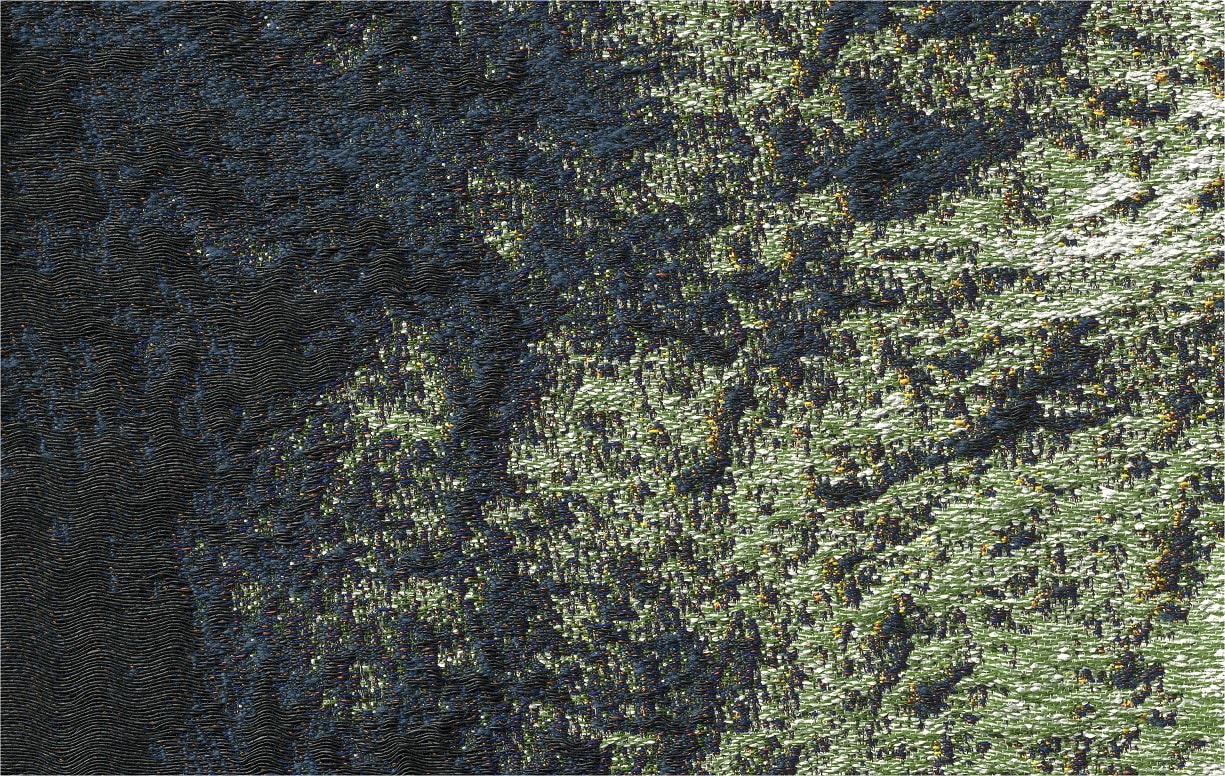
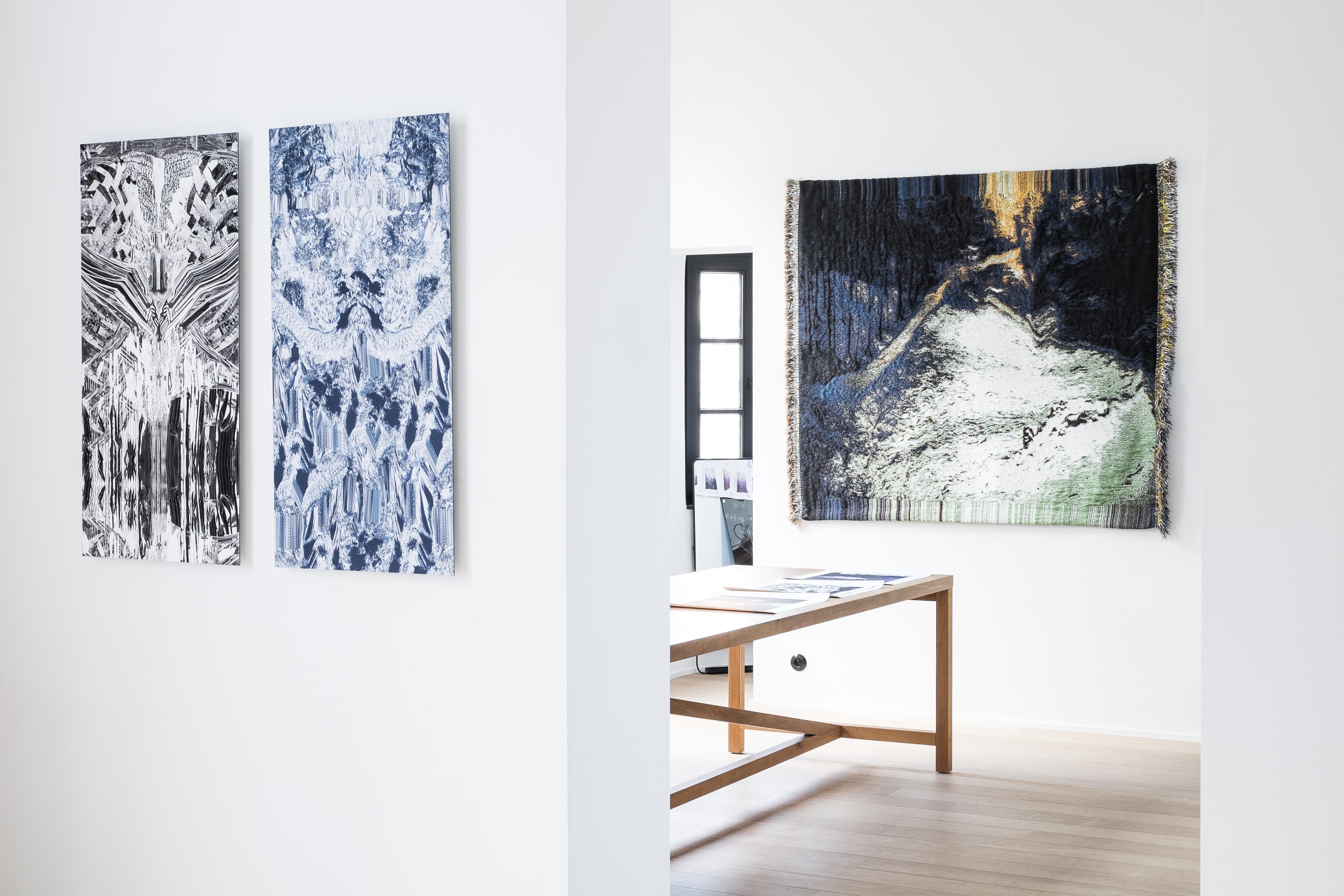
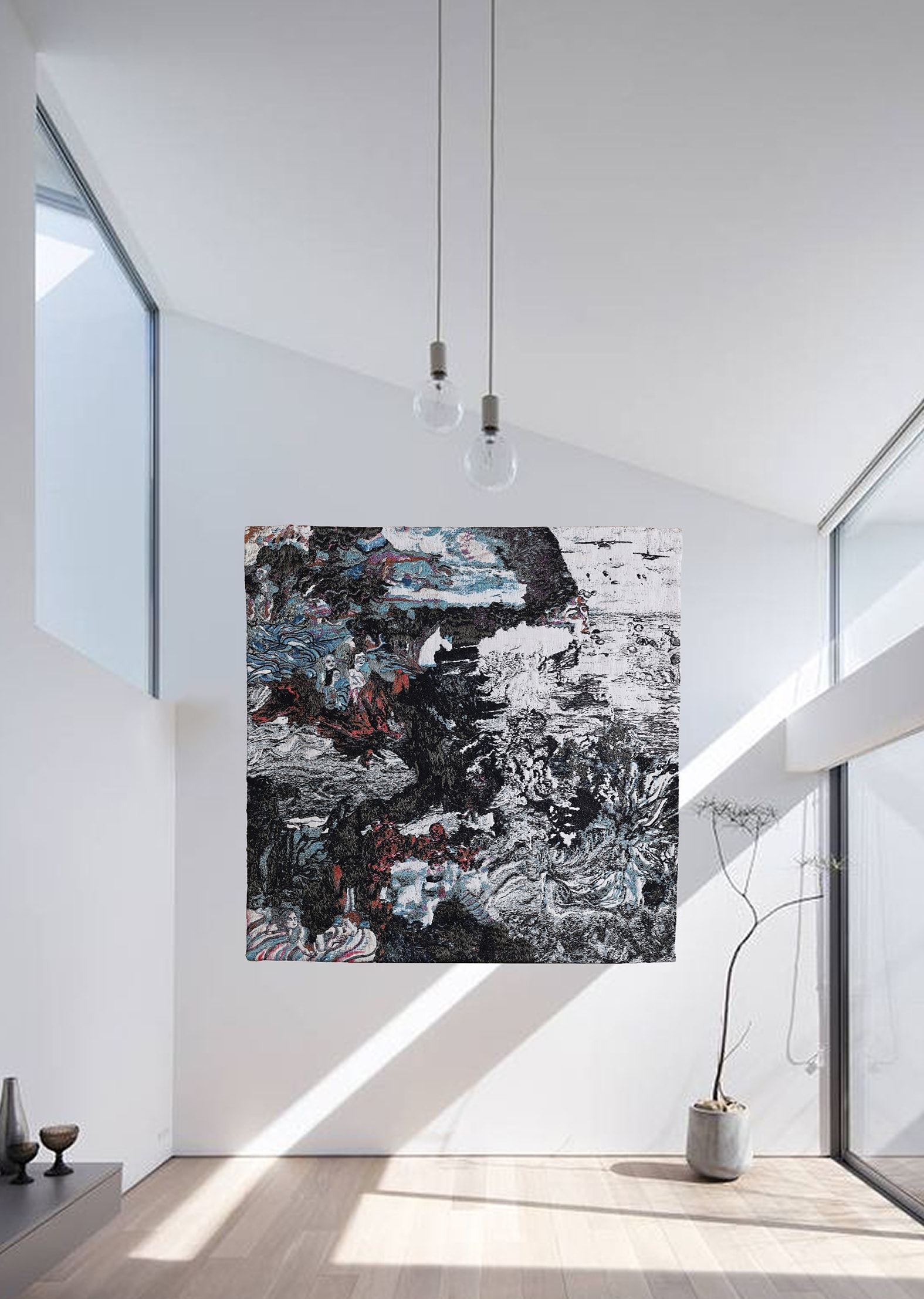
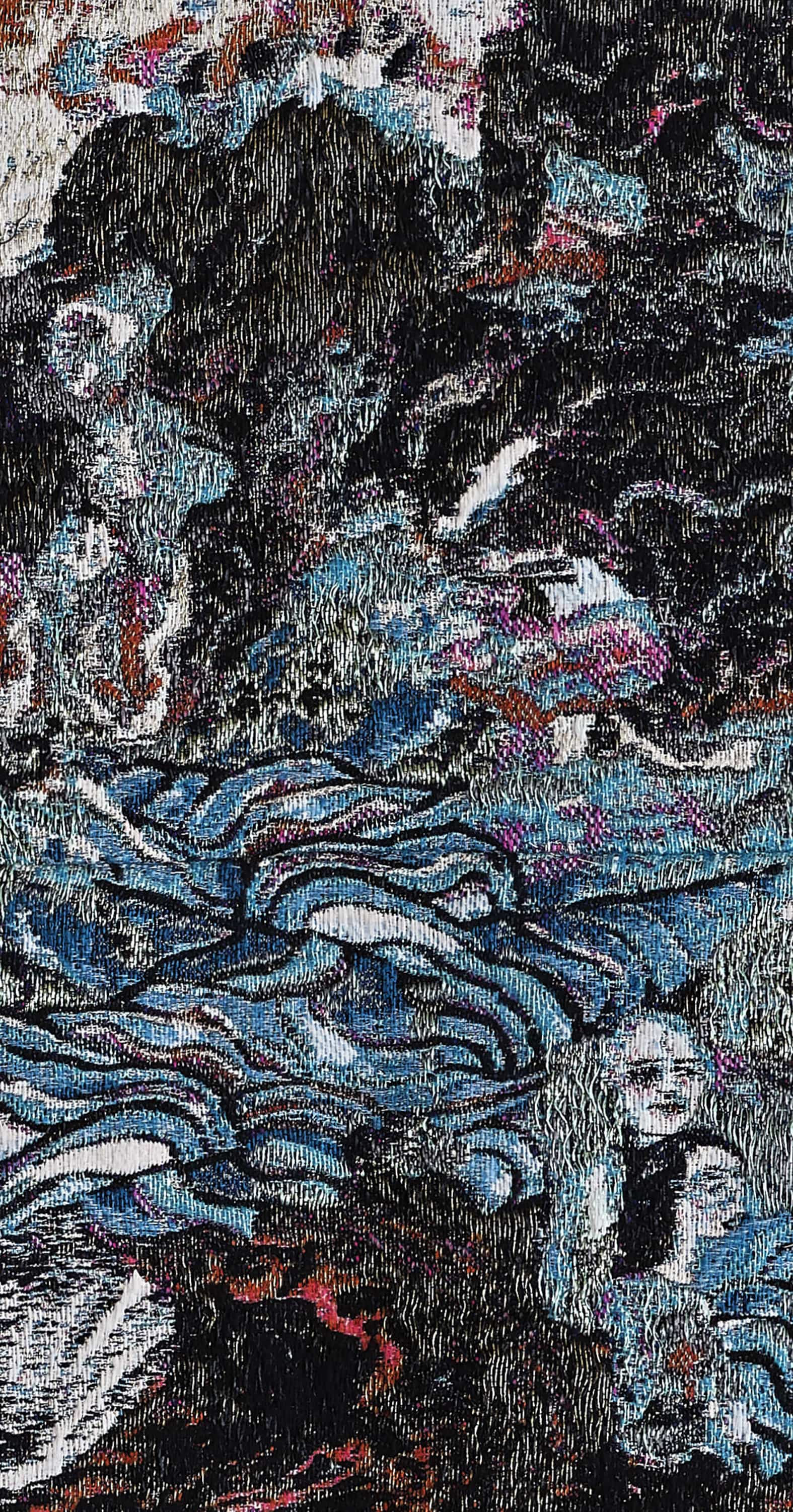
Krjst Studios. Photos courtesy of NYTM.
Tiago Valente at Urban Zen with Lidewij Edelkoort and Donna Karan
Multidisciplinary artist and designer Tiago Valente draws from anthropology to explore sociological issues through mediums including wearable sculptures and architectural installations. MONU’IA is the story of Valente's visit in 2013 to four tribal communities on the island of Vanuatu. Guided by instinct, Valente decided to take a textile installation on the trip, displaying it in the remote villages he visited.
He says that the interactions spurred by this textile piece transformed his understanding of human connections and, through this footage, he's visually captured the impact of modern society on their cultures. “Through the use of textile, creativity is articulated as a universal language that transcends any imaginable barrier.”
For NYTM, Valente presented his textile installation — along with a special screening of the documentary at Donna Karan’s Urban Zen New York store.
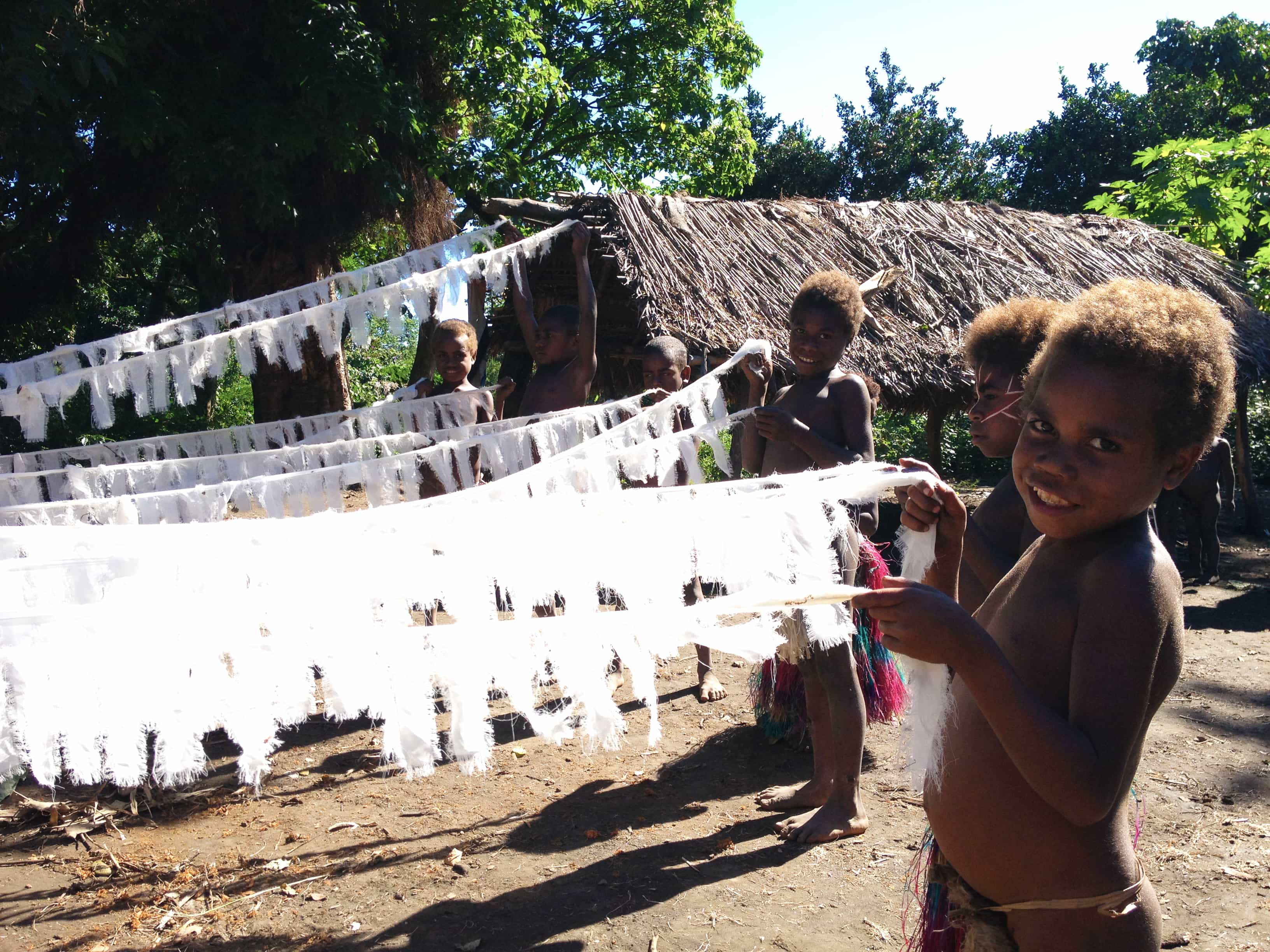
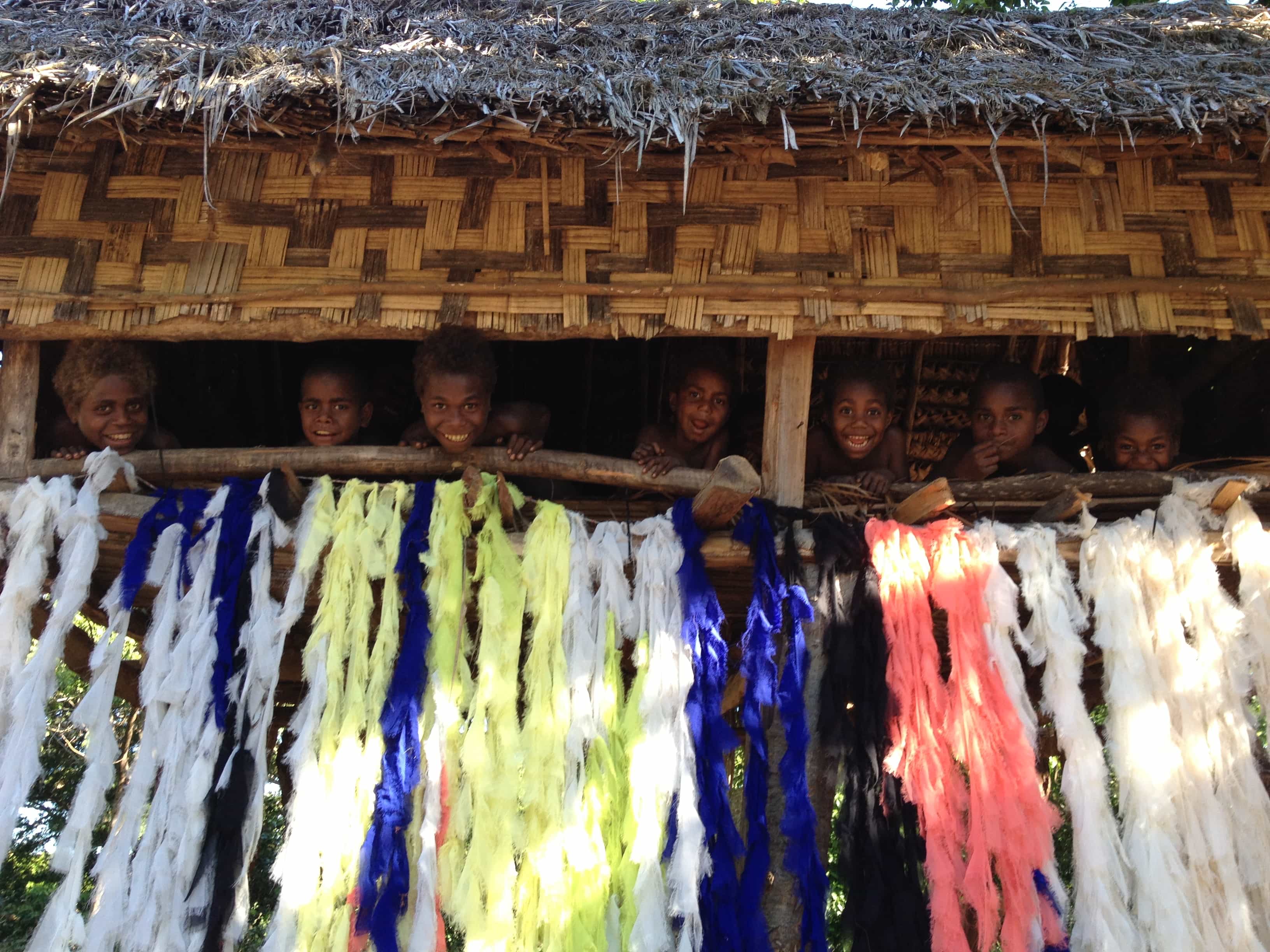
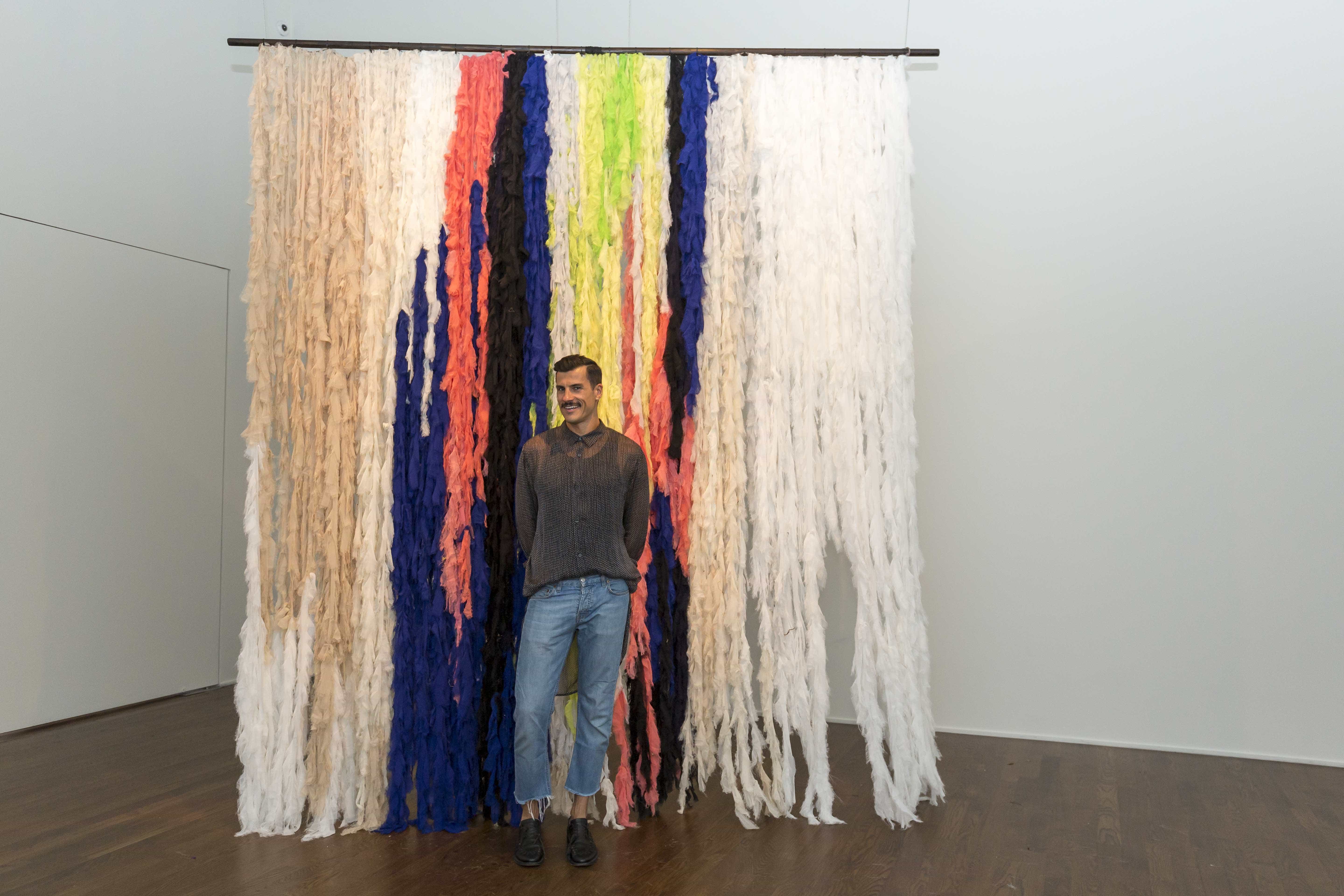
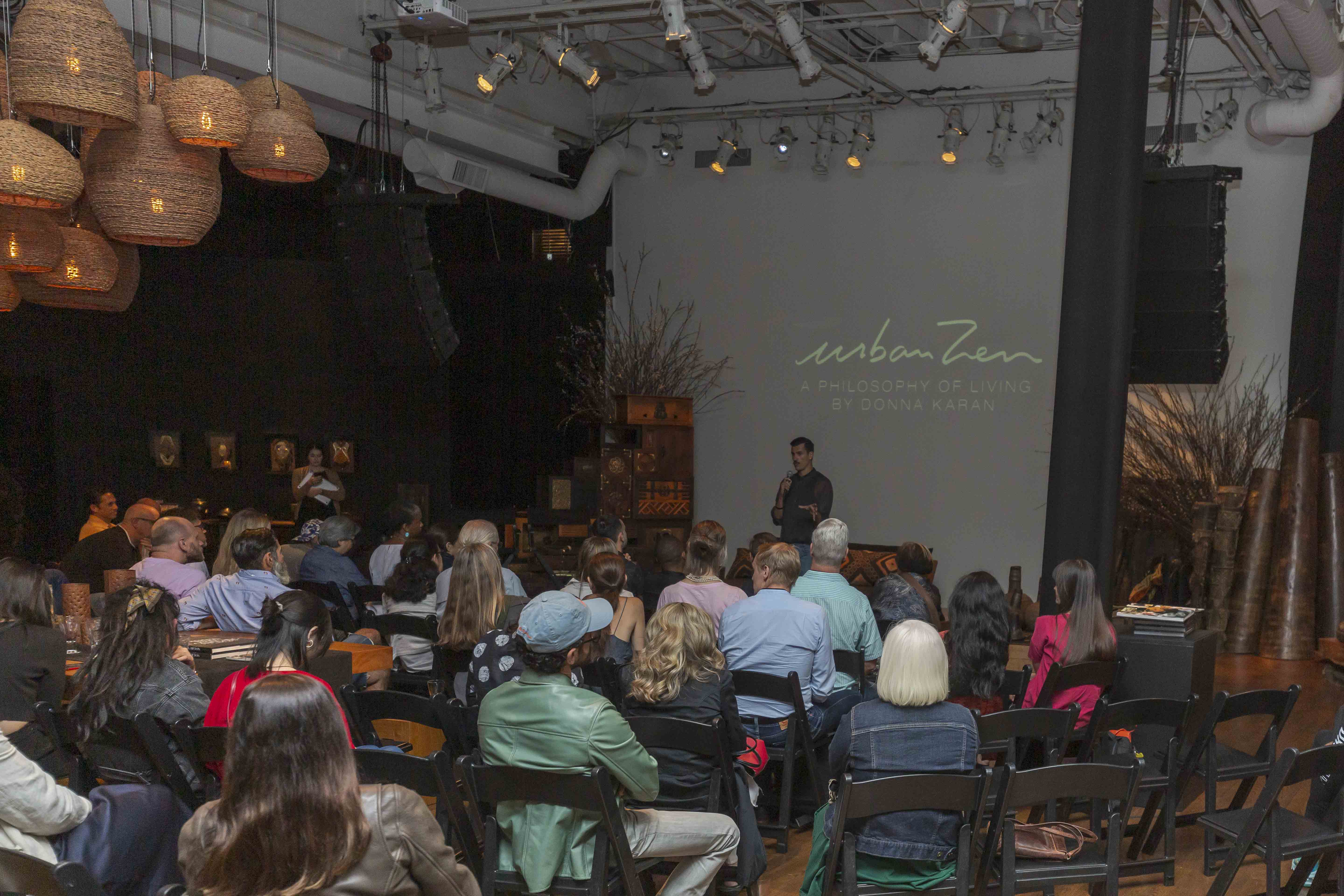
Photos courtesy of Tiago Valente.
Hudson Valley Textile Tour: The Design Library, NY Textile Lab, and Little Creek Alpaca Farm
New York Textile Month produced a tour of the Hudson River Valley that began at the Design Library in Wappingers Falls, giving an opportunity for attendees to view the library's collection of millions of paintings, wallpapers, embroideries, and yarn dyes that date from 1750 to today. Library Director Peter Koepke (also the author of Patterns: Inside the Design Library) says the event "provided a rare departure from the normal Library policy of being exclusively dedicated to our client companies and not open to the public."
The next stop on the tour was in Beacon at the NY Textile Lab, a yarn and textile design and consulting company, where the group did an indigo dip-dyeing session. The tour then moved on to Little Creek Farm Alpacas in North Salem where the first Carbon Farm Tour was led by Gibson Durnford, a coordinator for the Watershed Agricultural Council. Gibson discussed the health of the soil and the importance of farm composting for carbon drawdown.
A panel discussion about climate-beneficial yarn and textile sourcing was moderated by Laura Sansone of NY Textile Lab. Panelists included Timo Rissanen, Associate Professor of Fashion and Sustainability at Parsons and Stacie Chaves of Imperial Yarn. Fashion Designer Mara Hoffman was also included on the panel and gave an honest, compelling account of how her company transitioned to sustainable sourcing and circular production practices.
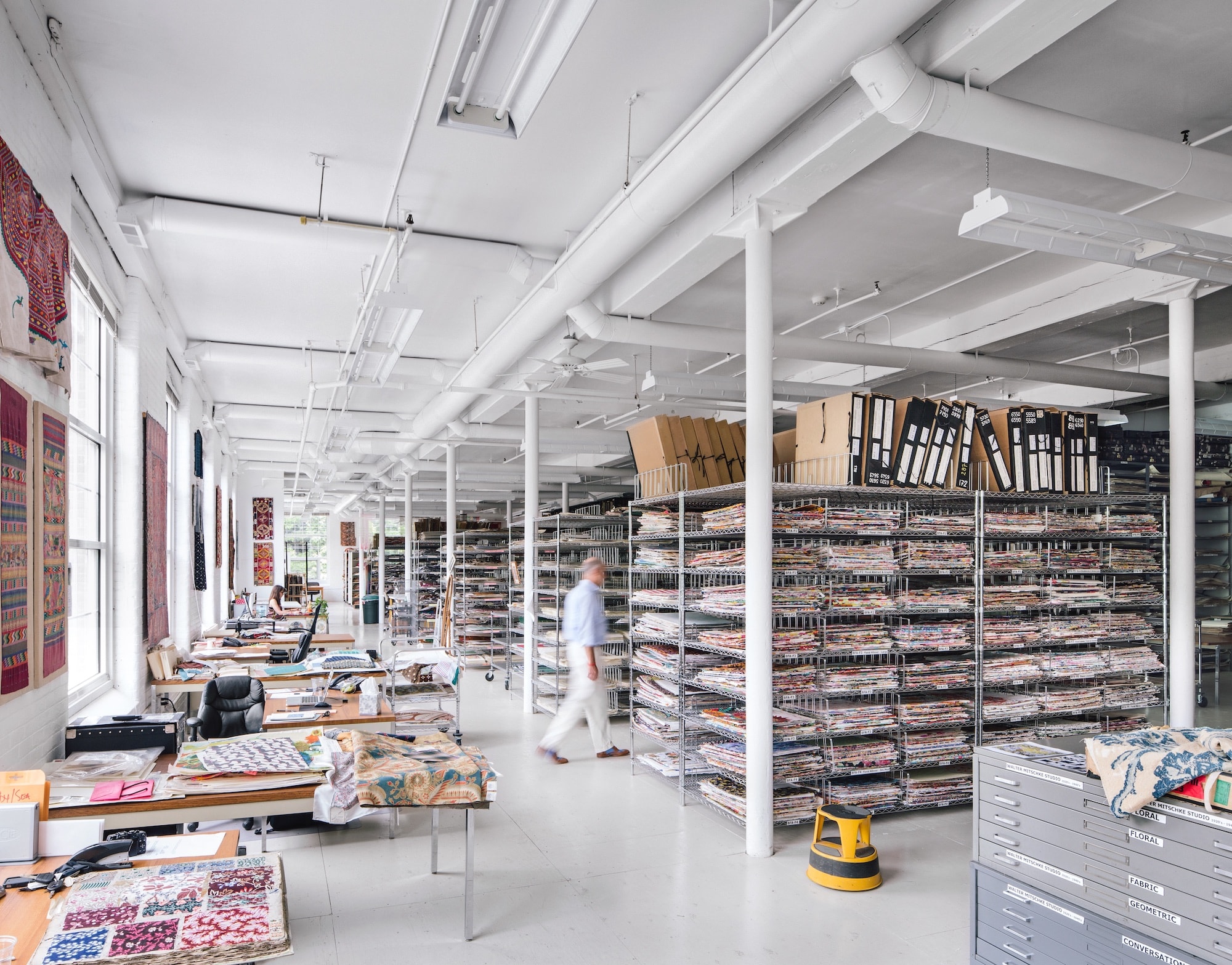
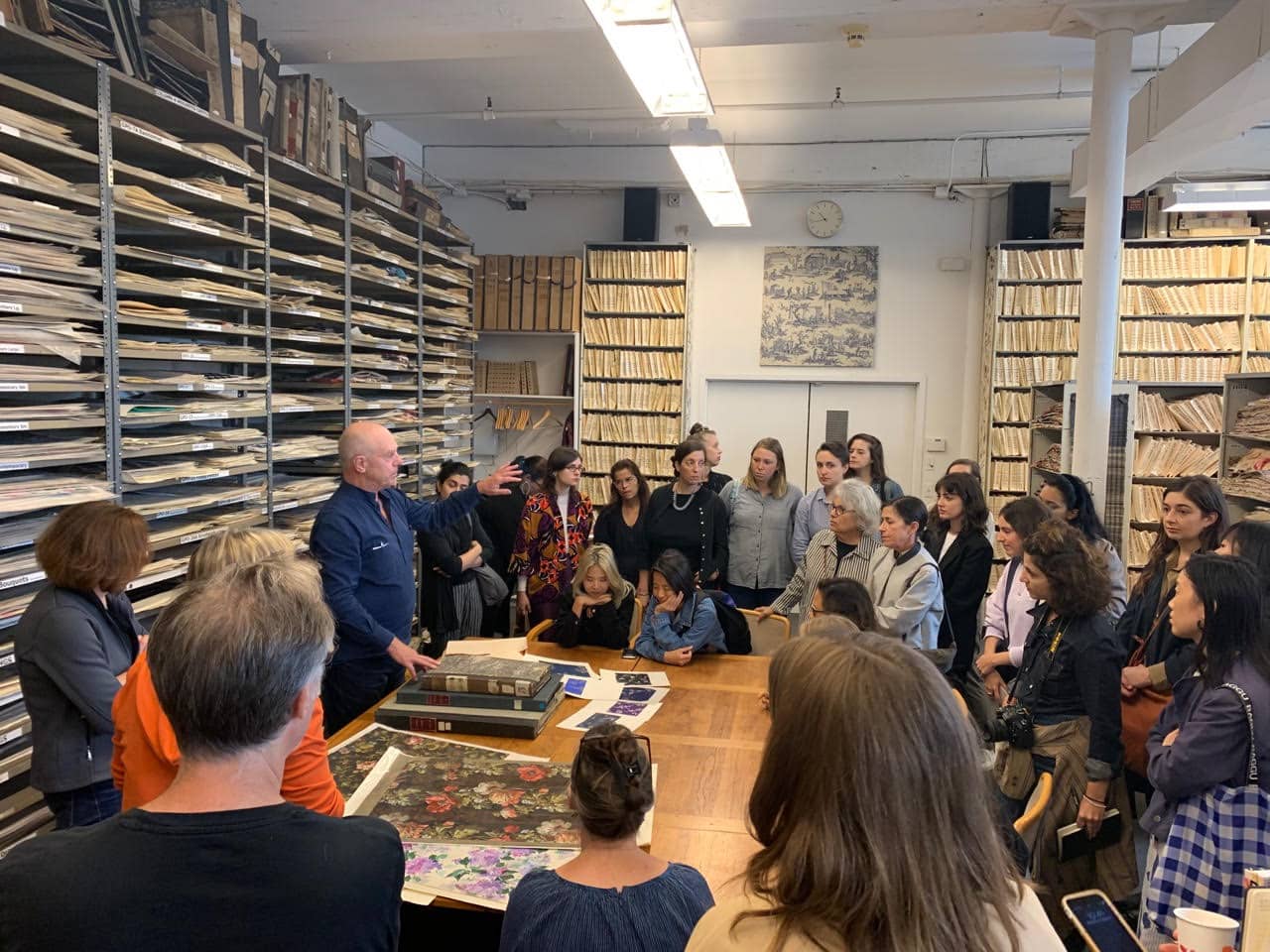
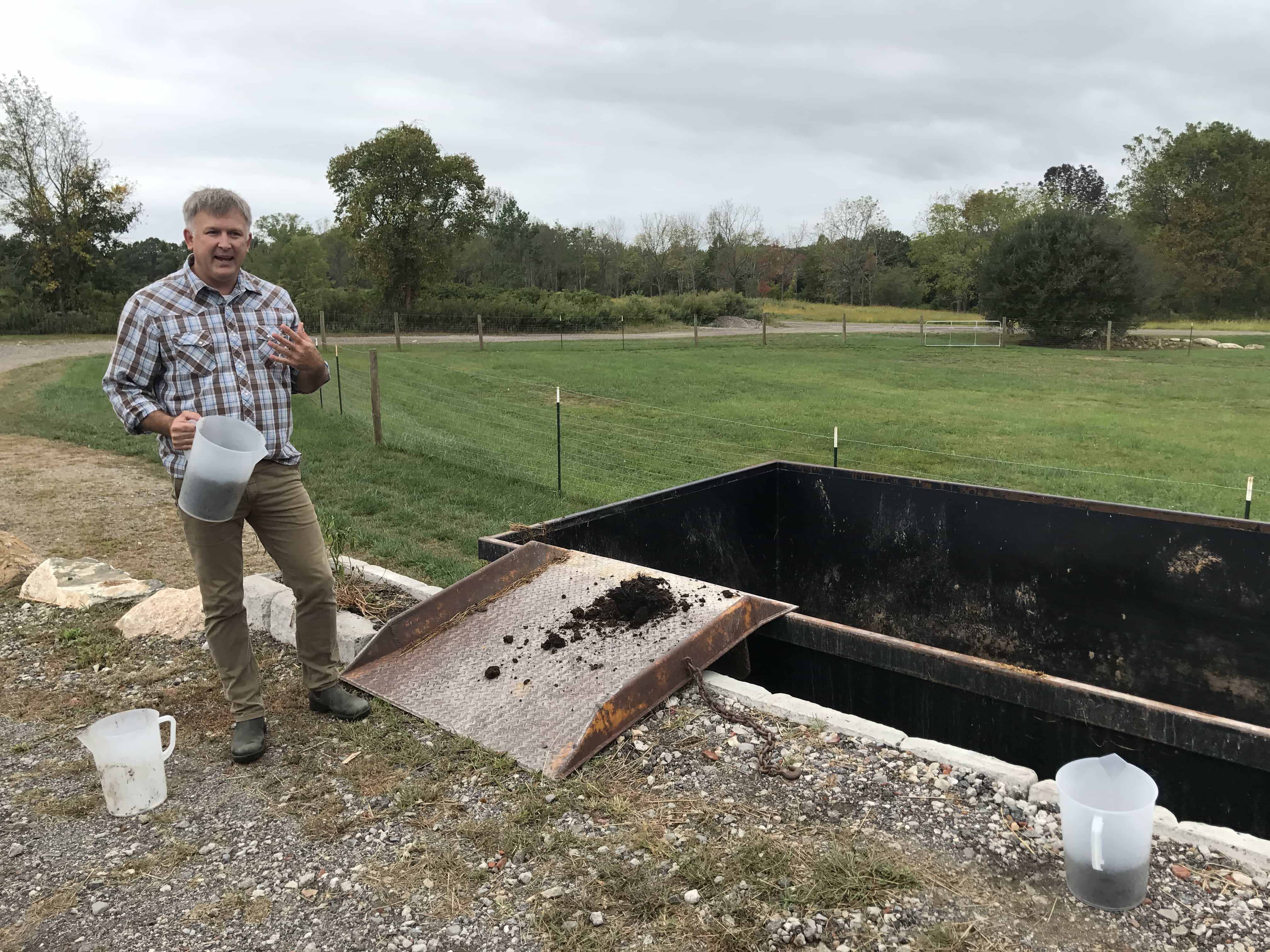
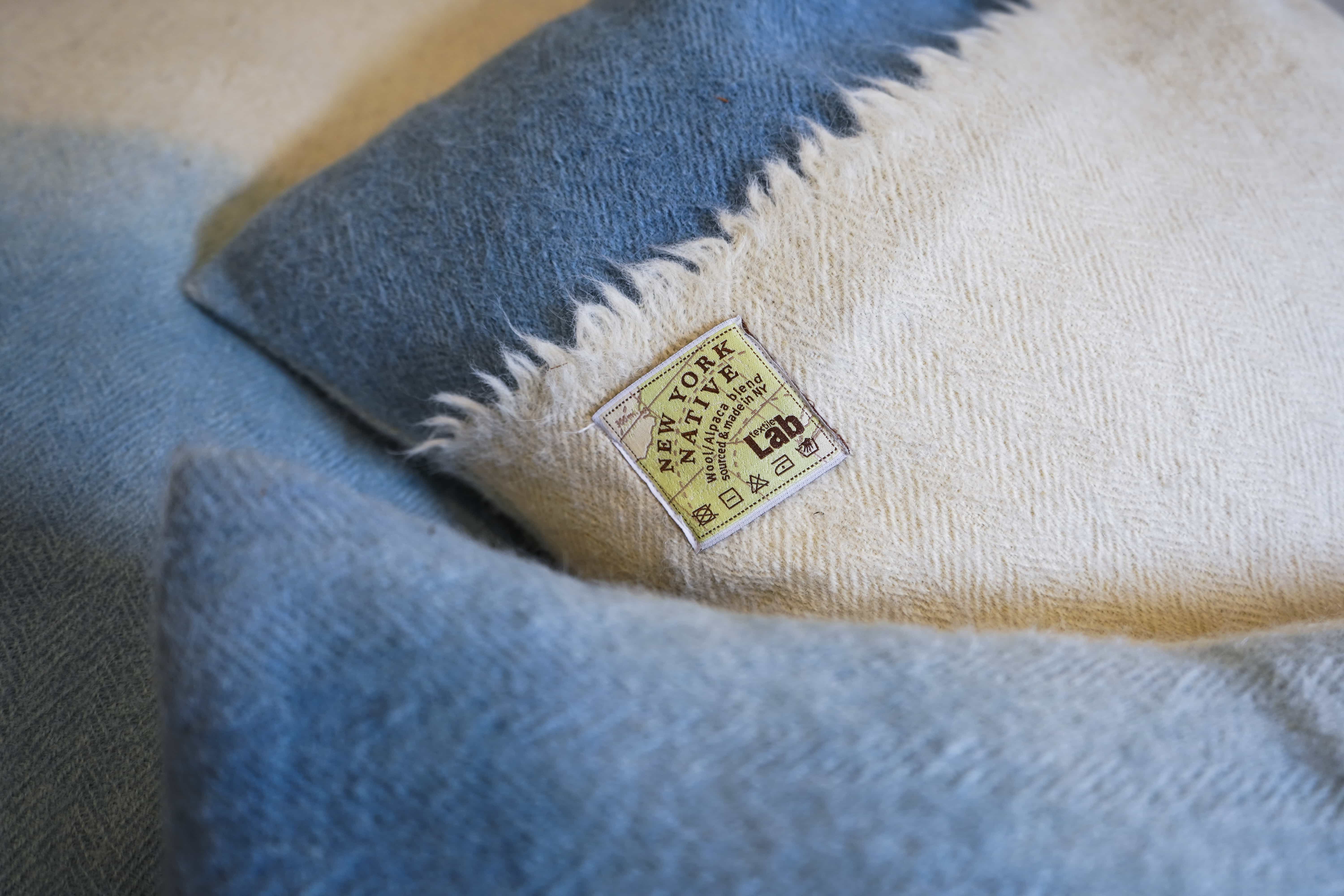
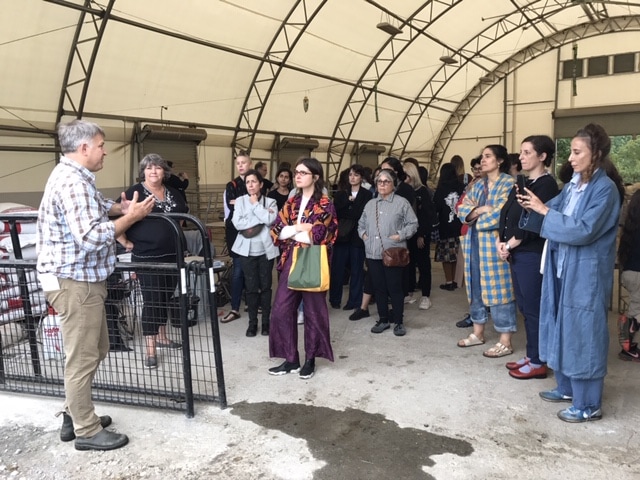
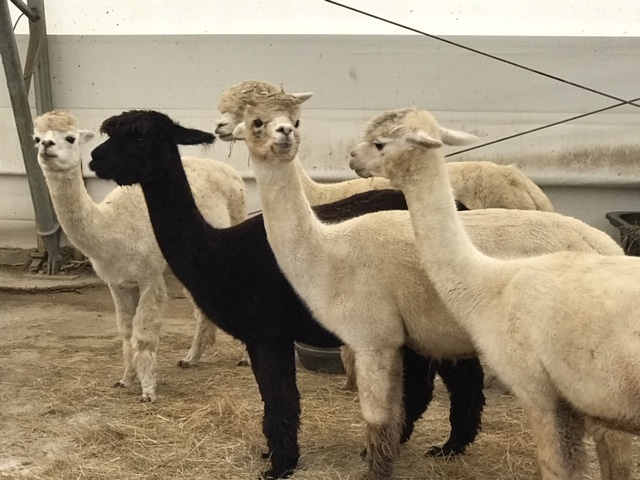
Photos courtesy of NYTM.
'Construction' by Molly Haynes and William Storms
New York City-based textile artists Molly Haynes and William Storms collaborated on Construction, an exhibition of tactile wall art and sculptural rugs displayed as freestanding objects. The artists used inventive hand techniques to create exaggerated woven structures with uncommon materials like wire, marine rope, clothesline, and deadstock yarns. Haynes said the color palettes are deliberately sparse to "further assert the materials’ character and modern take on an ancient craft." The exhibit appears at the Russell Janis Gallery in Brooklyn until October 9th, 2019.
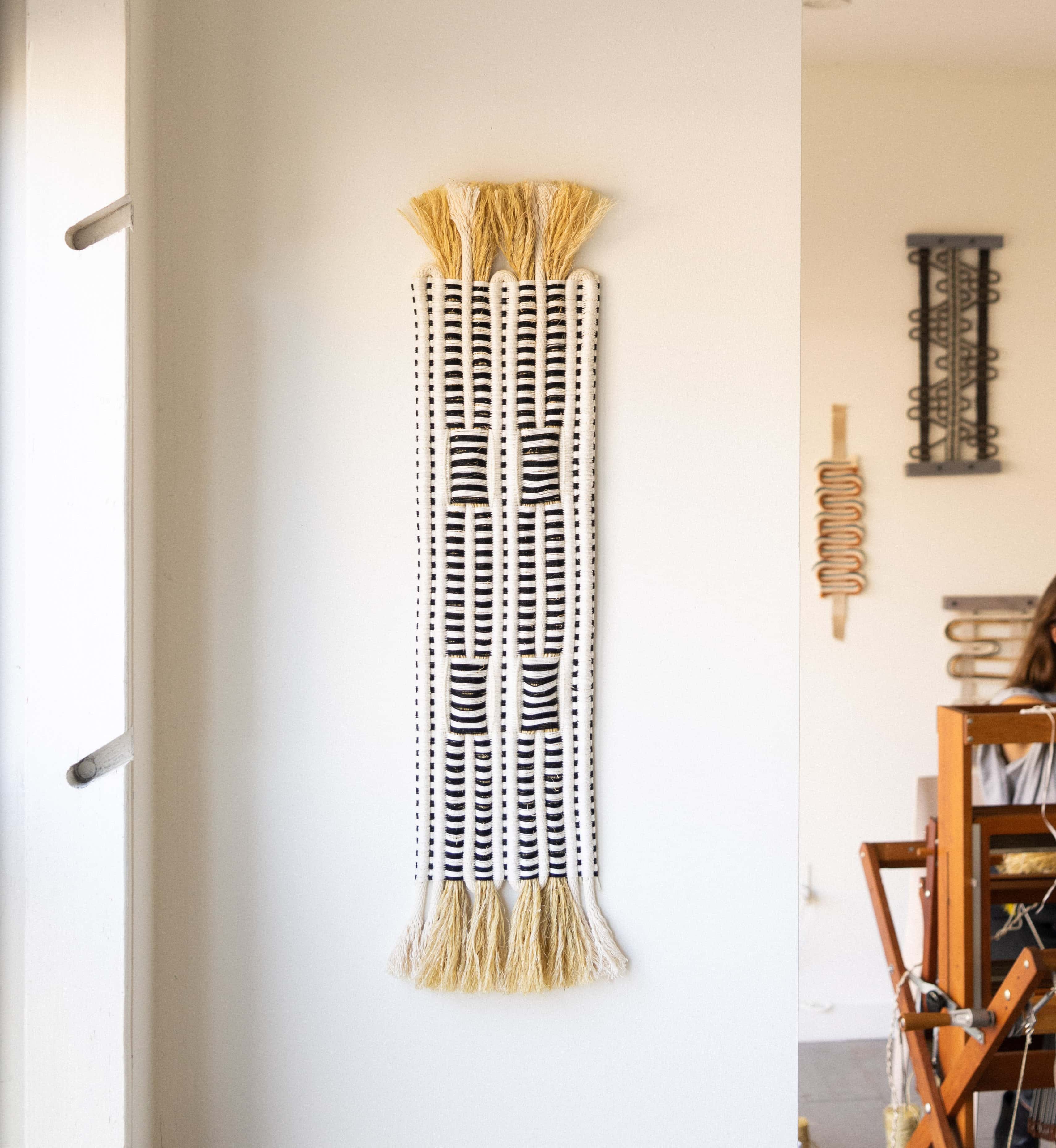
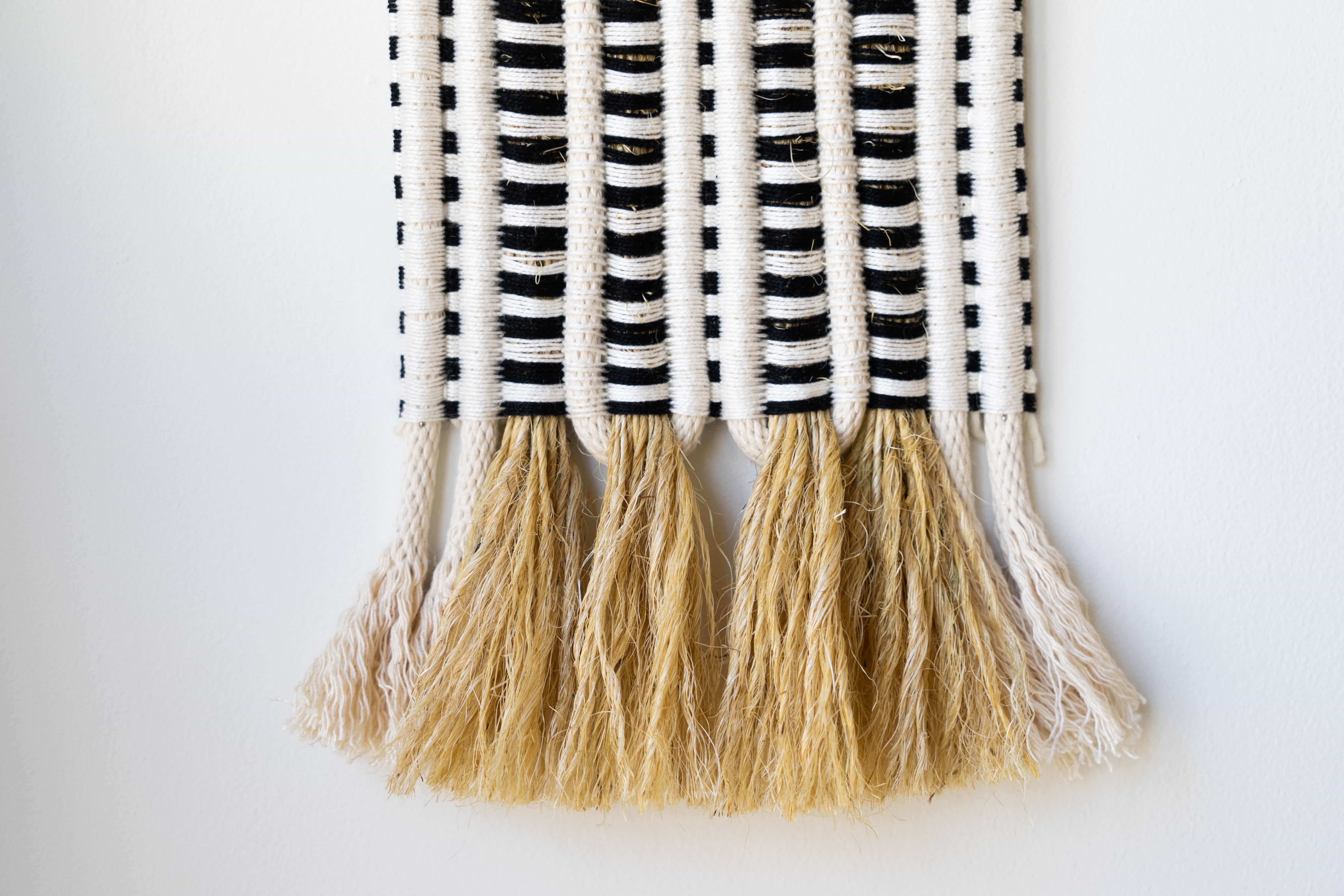
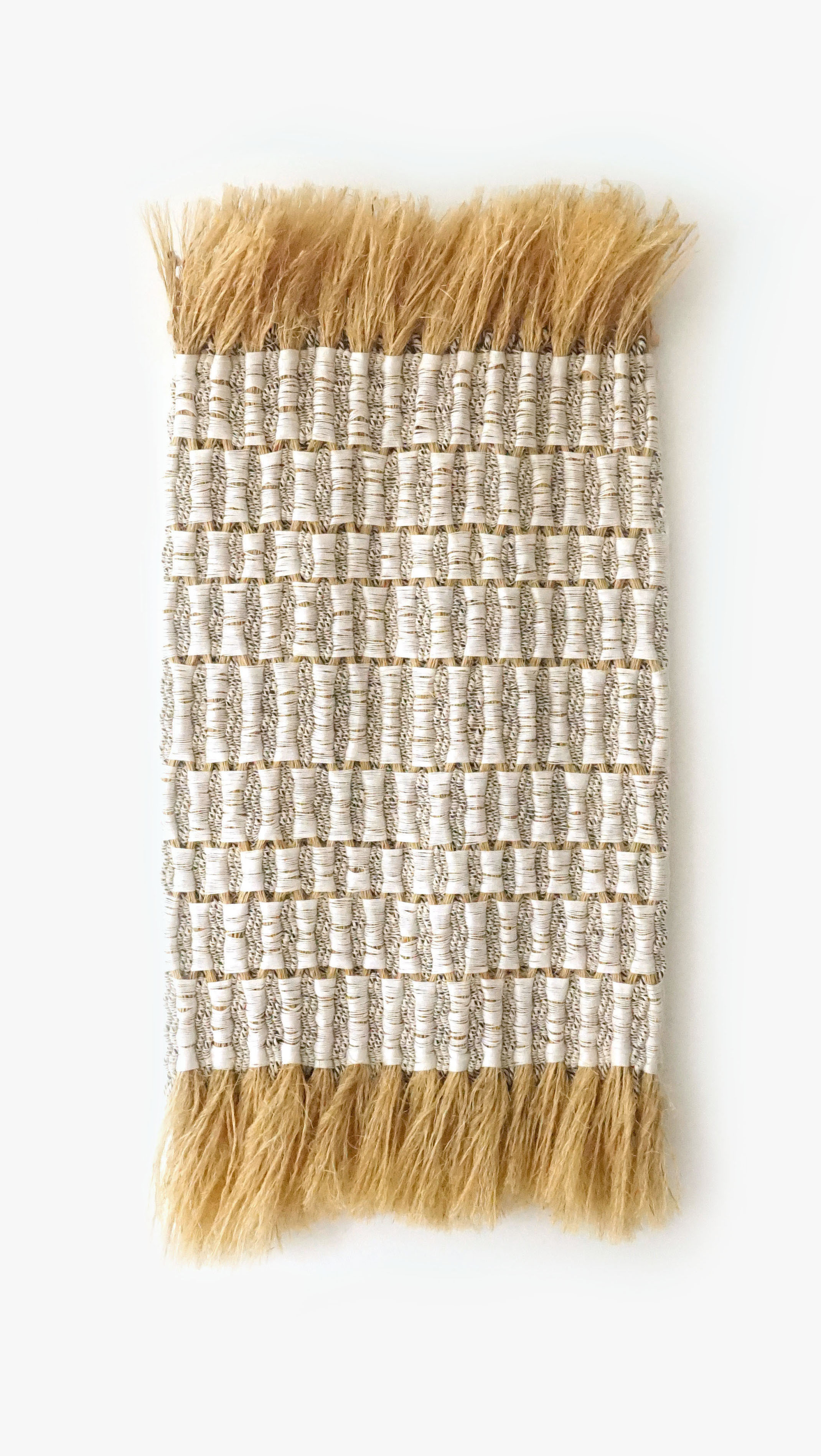
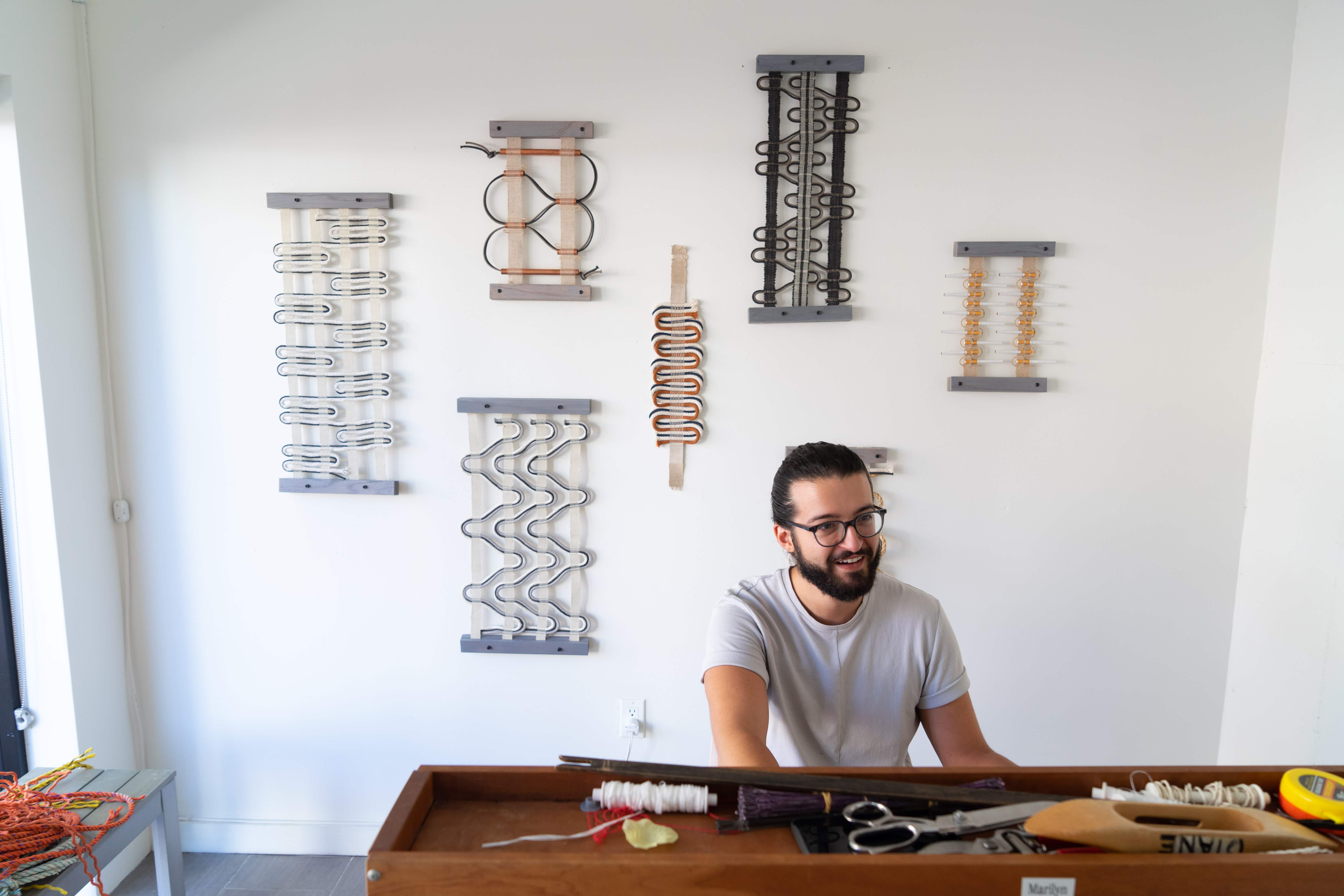
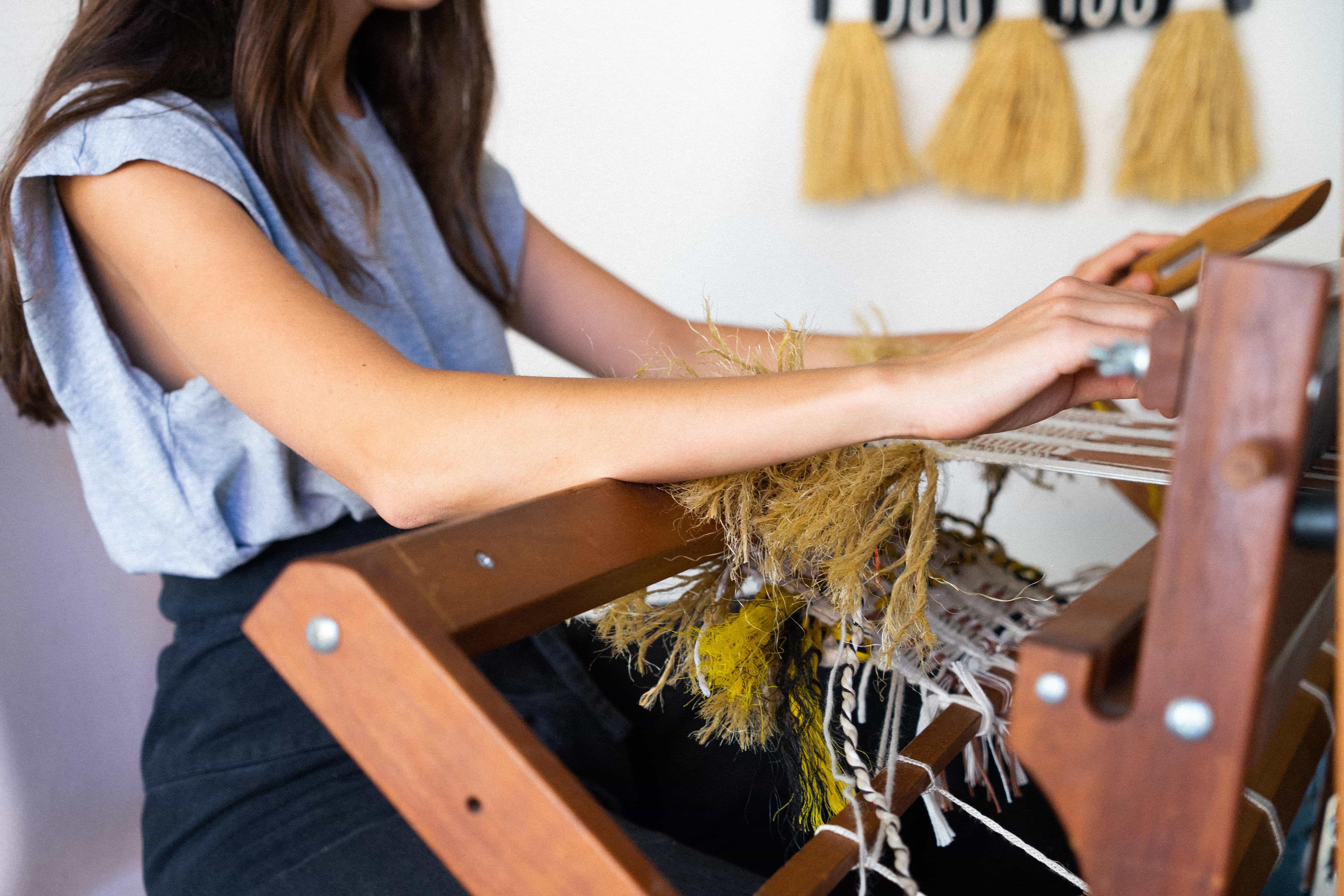
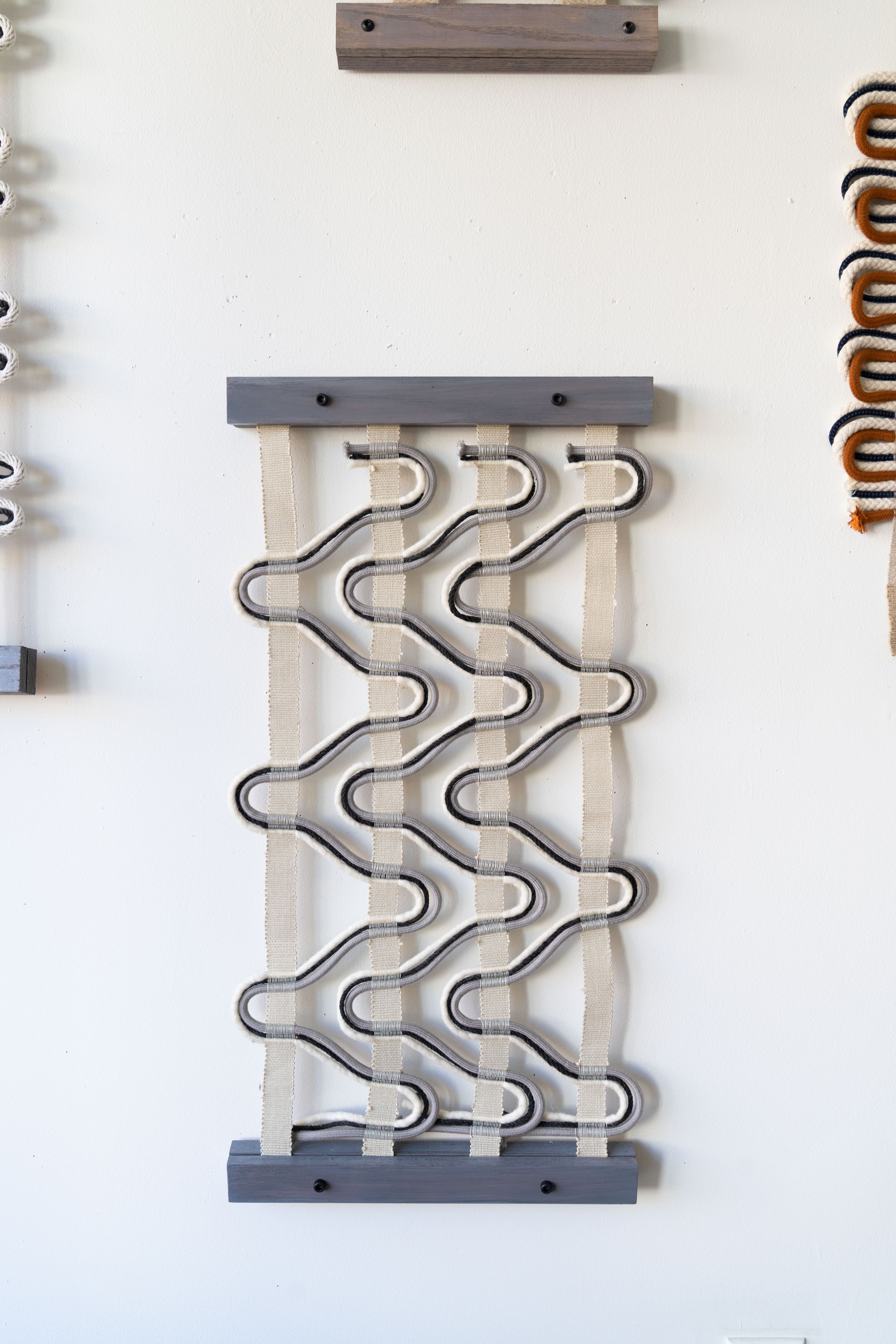
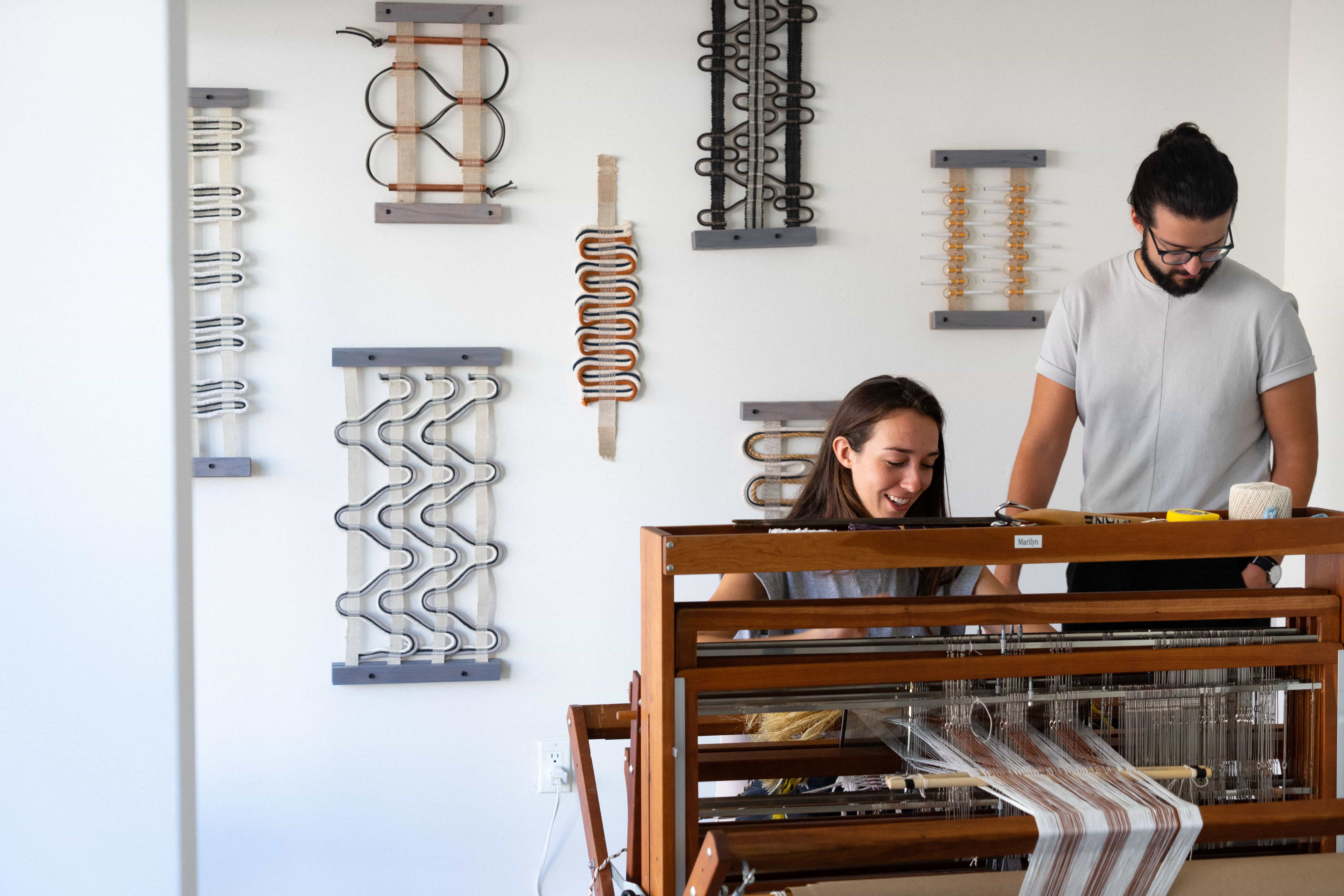
'Weavings' by Molly Haynes at M.Patmos
Haynes also had a solo exhibition at M.Patmos shop on Atlantic Avenue in Brooklyn featuring new works from her Float series. The title refers to warp yarns which float over the heavy weft yarns and create a feeling of wrapping, binding, and containing. Float is an investigation into Haynes' theme of duality; delicacy vs. strength, weightlessness vs. physical abundance. This series — and other small experimental "sketchbook works"— are available to view at M.Patmos until Thanksgiving 2019.
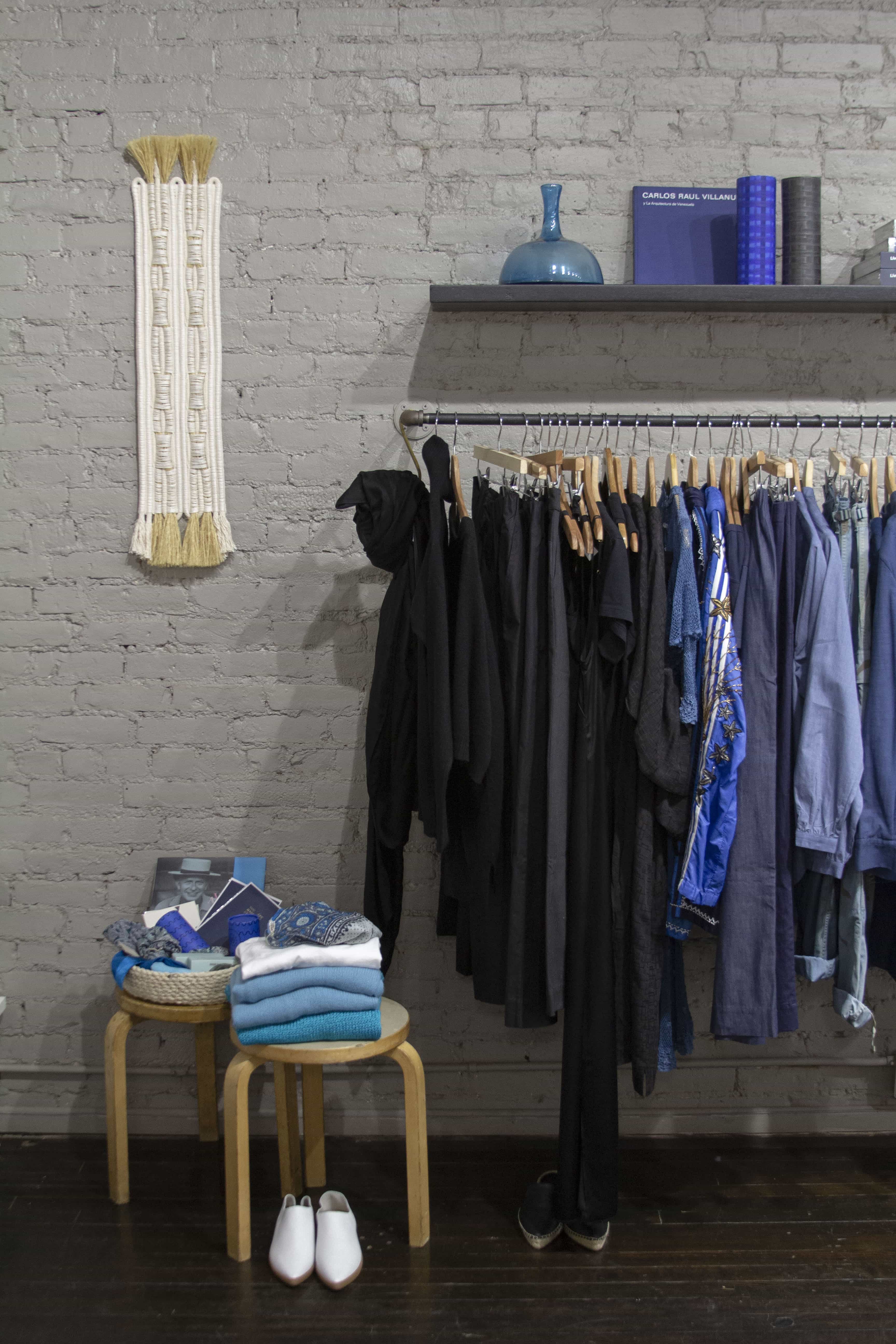
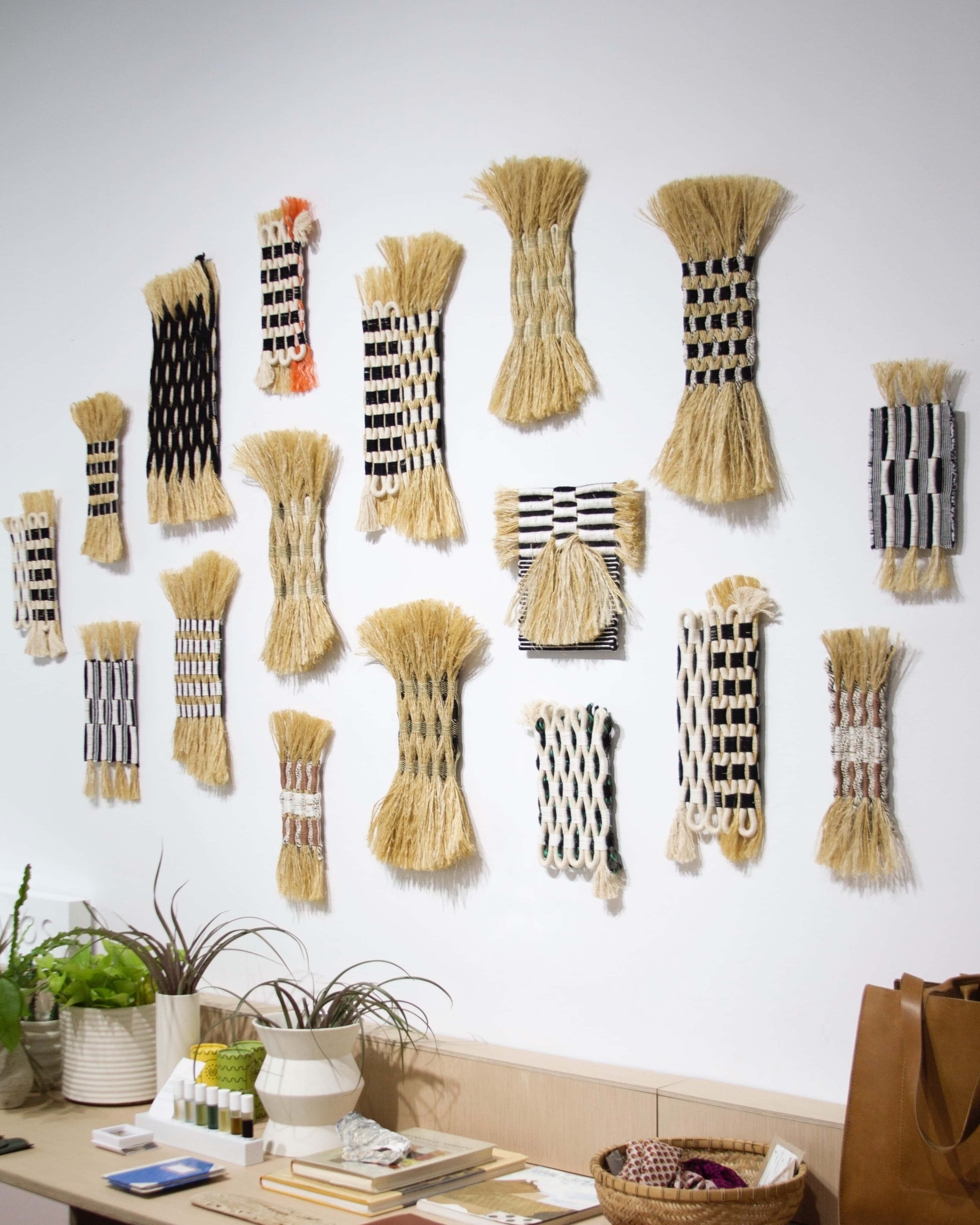
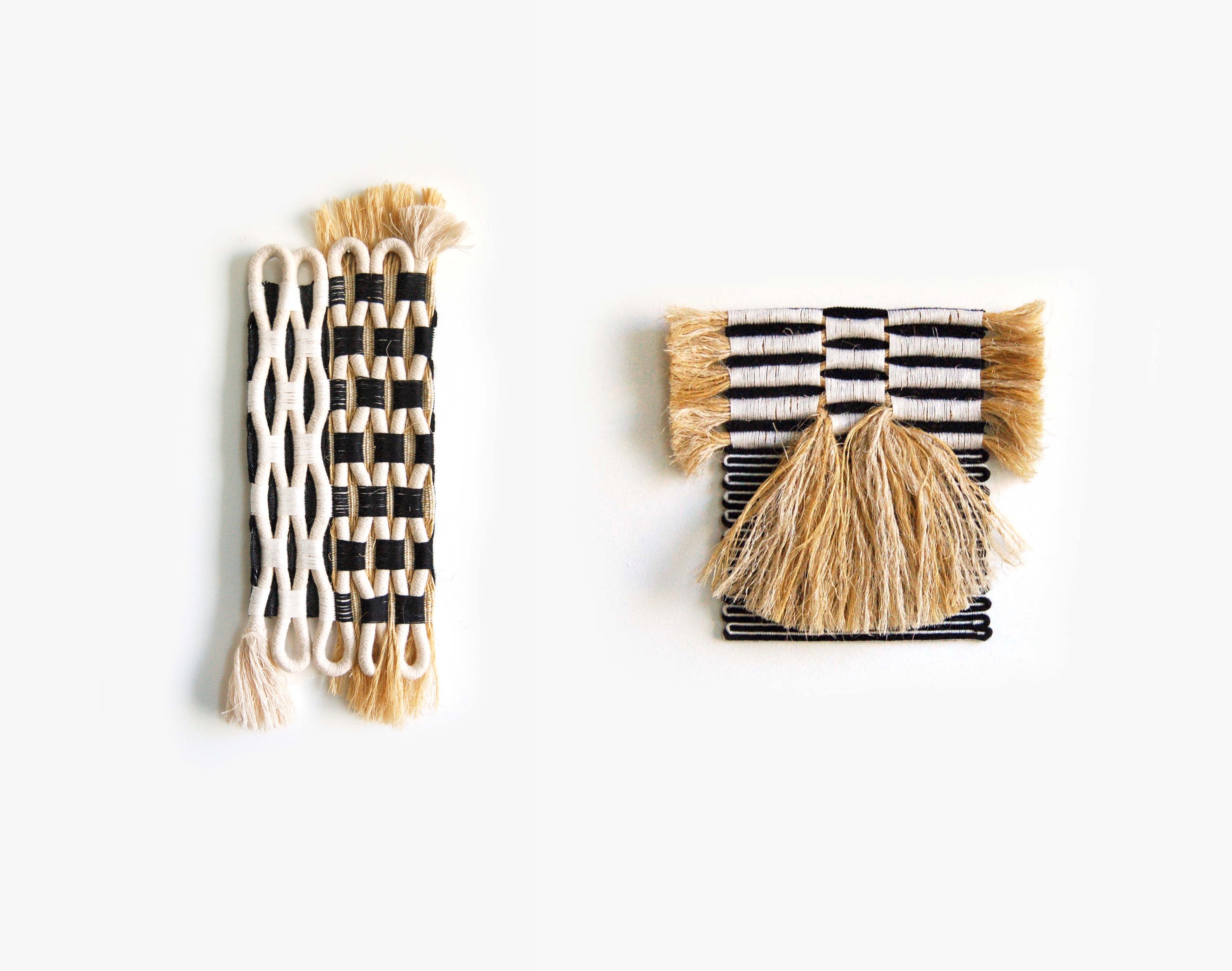
In Process: A Textile Story by Tanu Vasu
For this year’s edition of NYTM, designer Tanu Vasu created an installation at The Canvas multidisciplinary studio in Brooklyn.
“I wanted to create a textile journal to depict my work and sustainable use of textiles," Vasu said. "I enjoy utilizing old-world practice in combination with technological advancements in a manner where I can retain traditional craftsmanship.”
Employing techniques from hand-knit, to Saori weaving, and laser-cutting, Vasu works primarily with wool, silk, vintage fibers, and has even experimented with volcanic magma as a material.
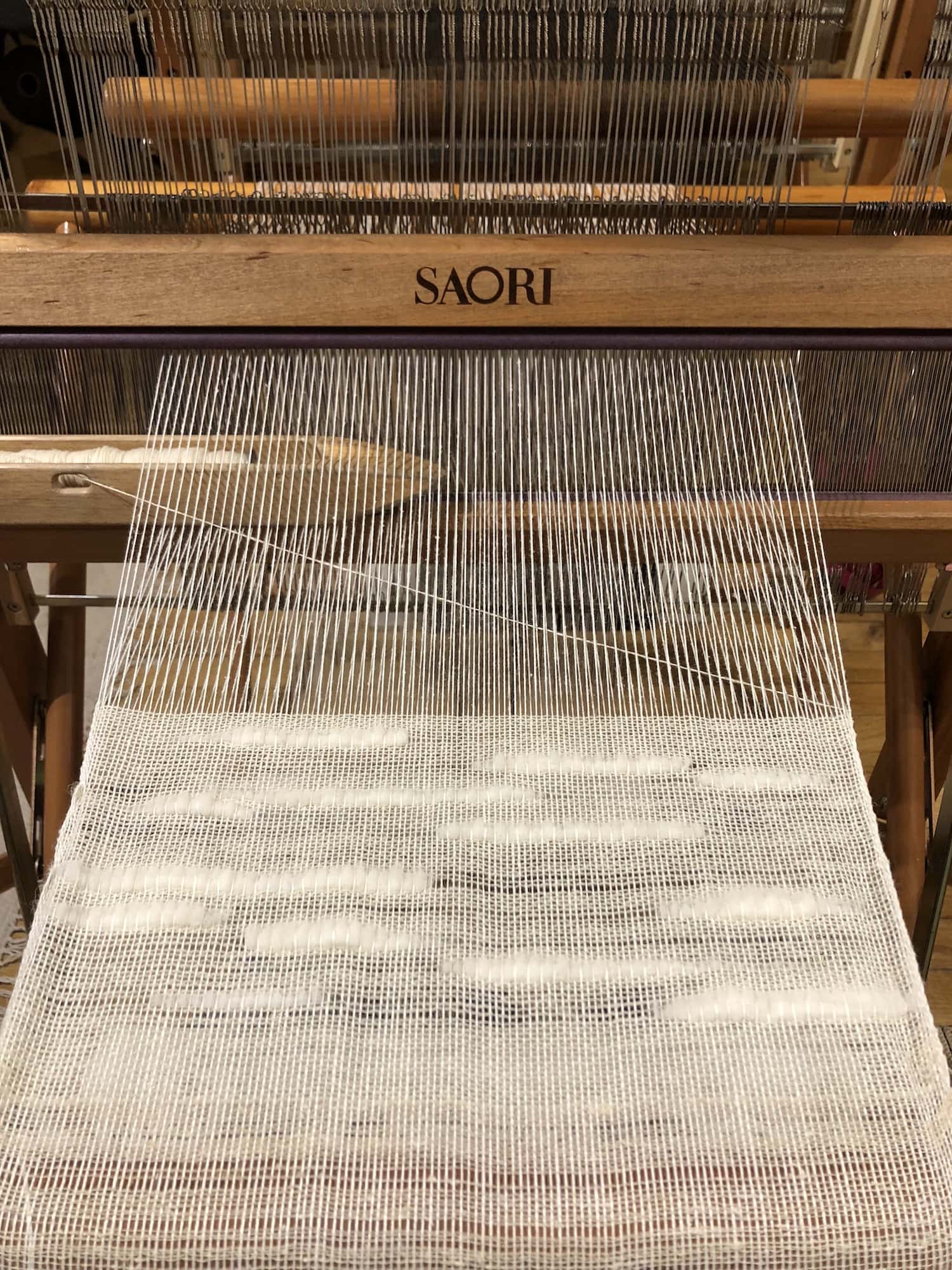
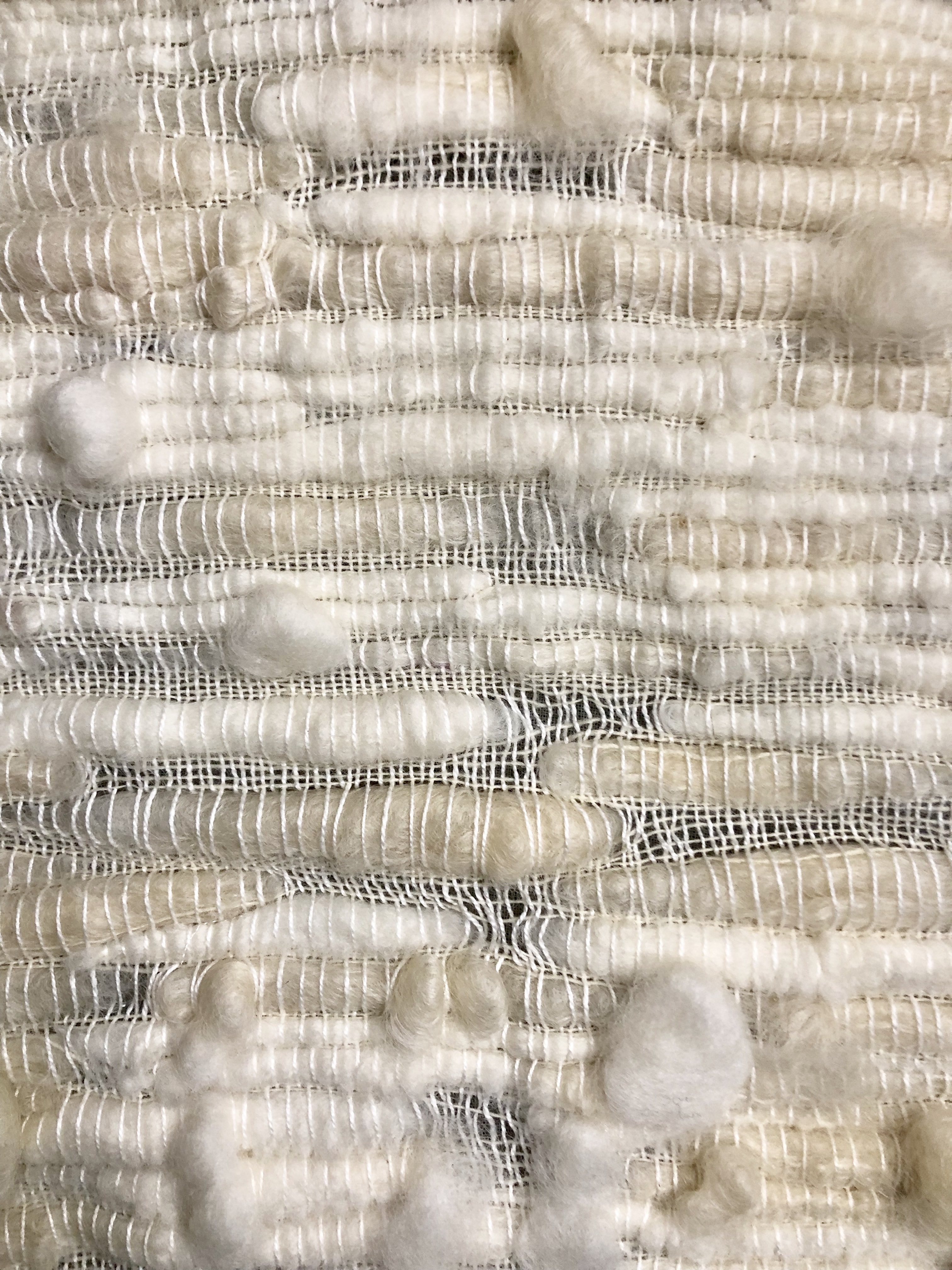
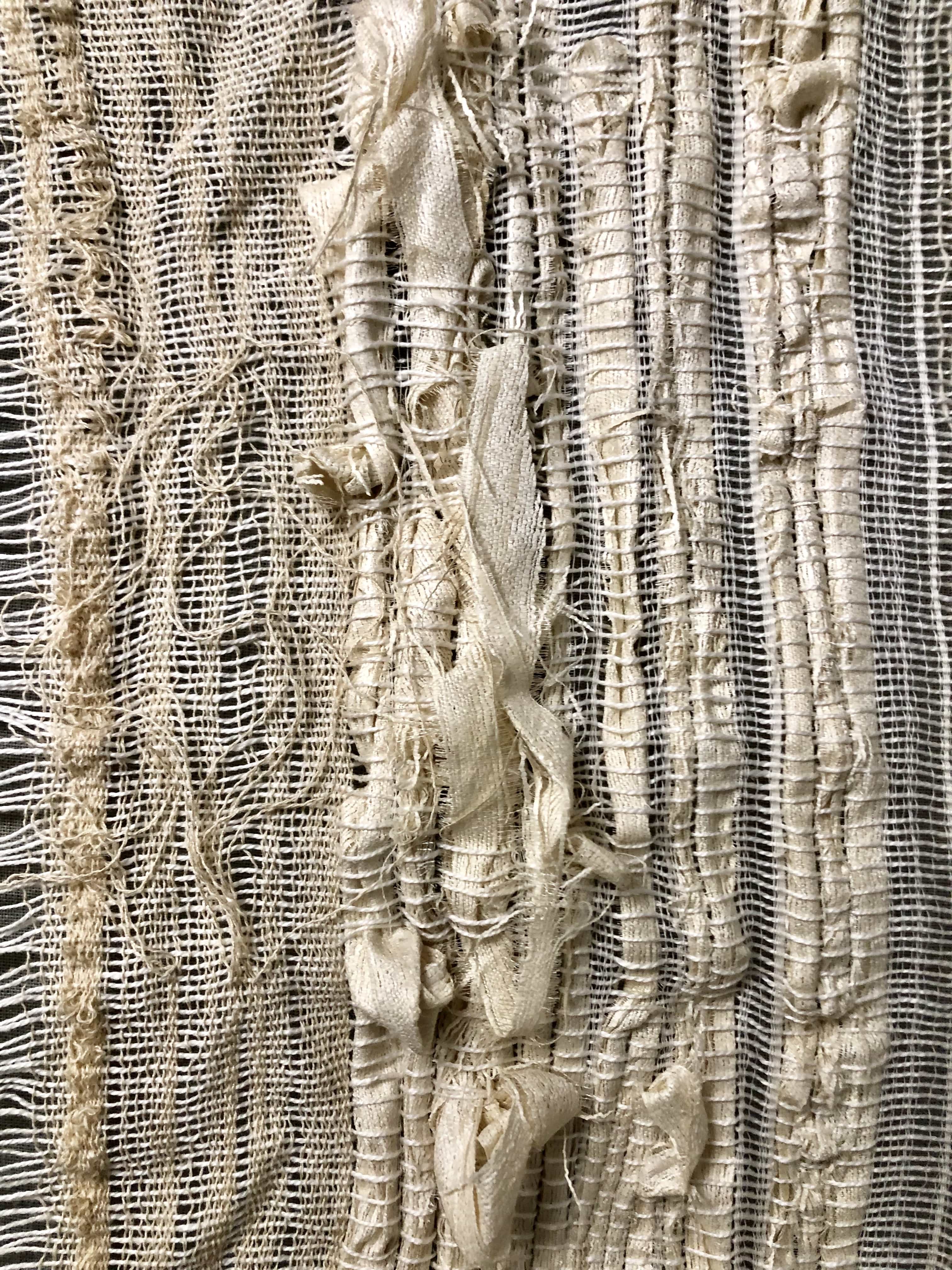
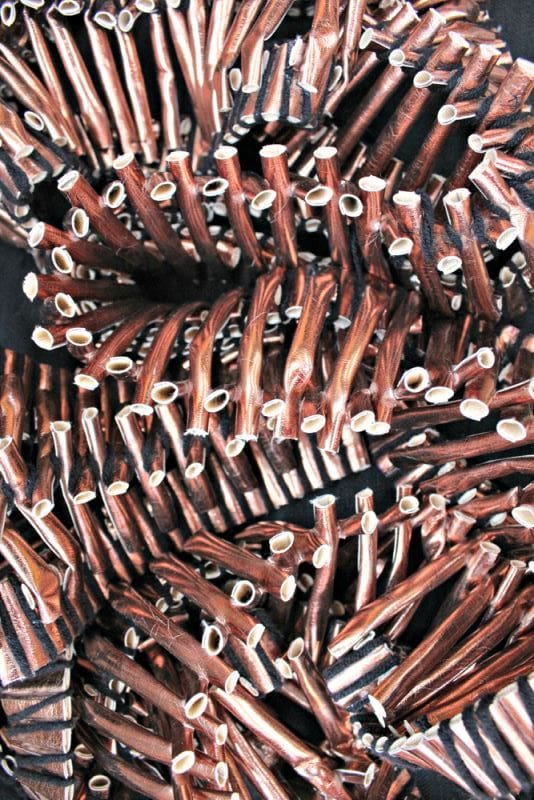
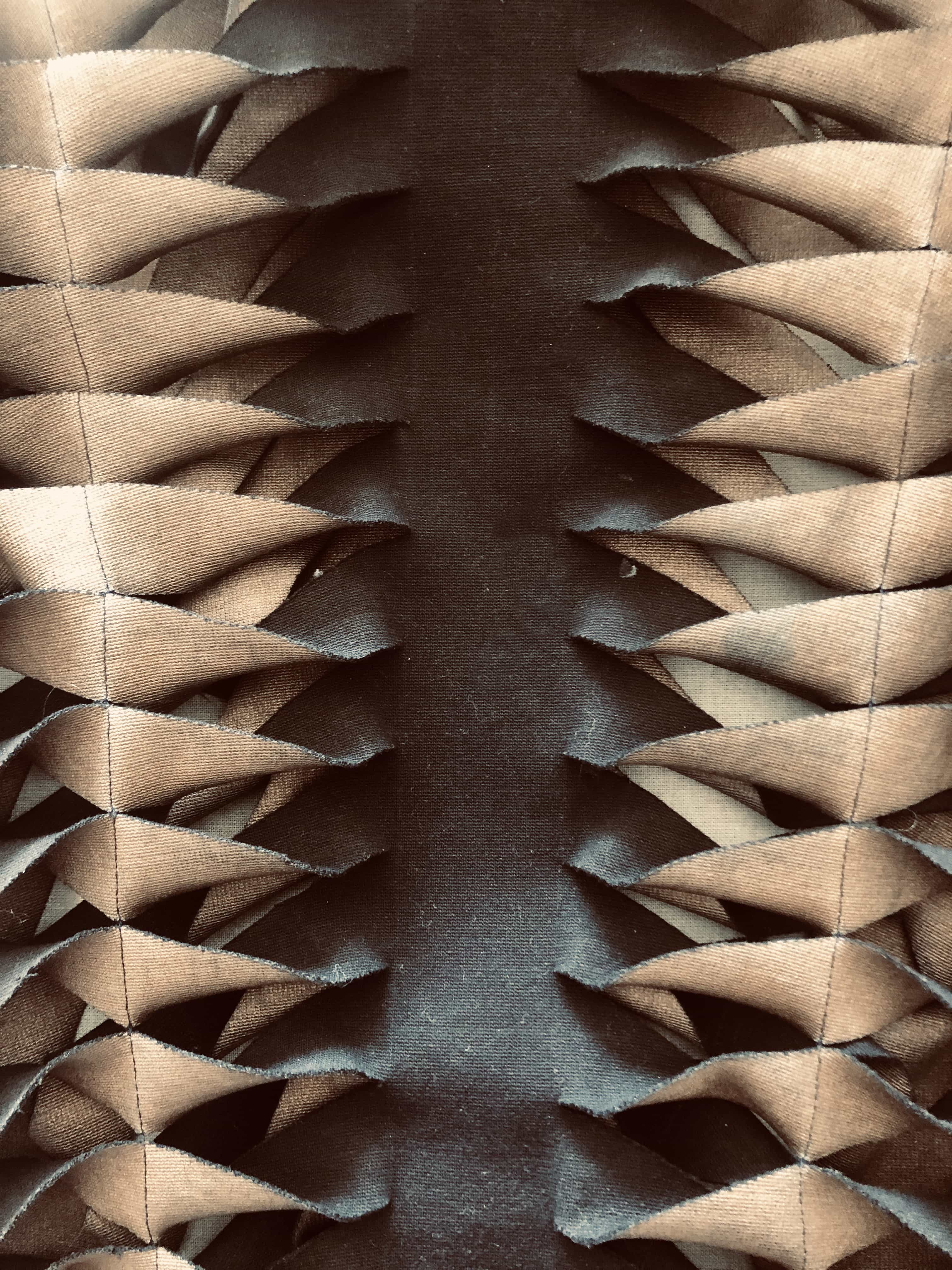
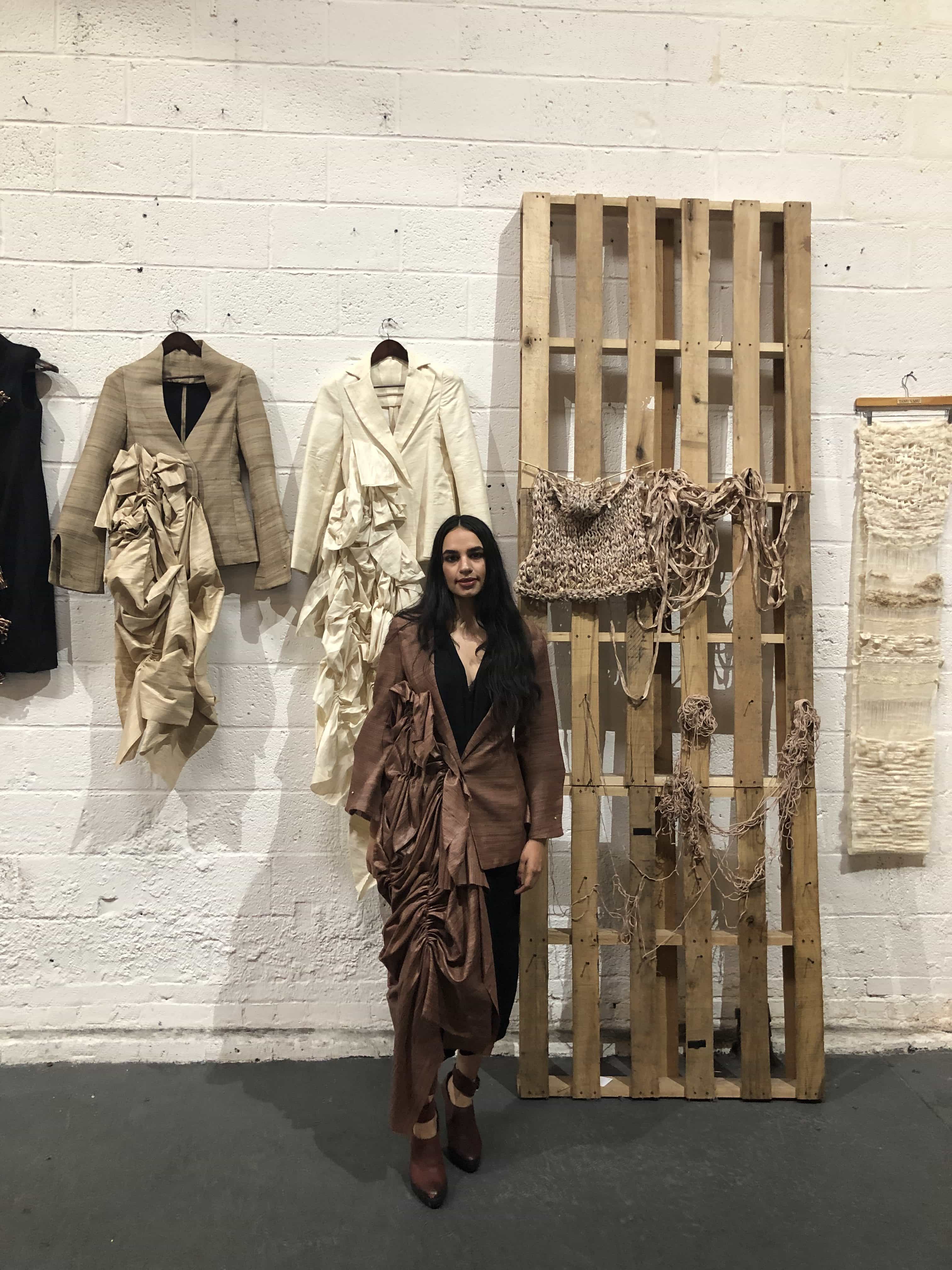
Photos courtesy of Tanu Vasu
Thompson Street Studio
Thompson Street Studio hosted an open studio and an experimental workshop during NYTM. Founder Kiva Motnyk demonstrated various hand textile techniques including quilting, embroidery, and tapestry sewing while inviting participants to create a small textile piece using vintage or repurposed materials and naturally-dyed fabrics.
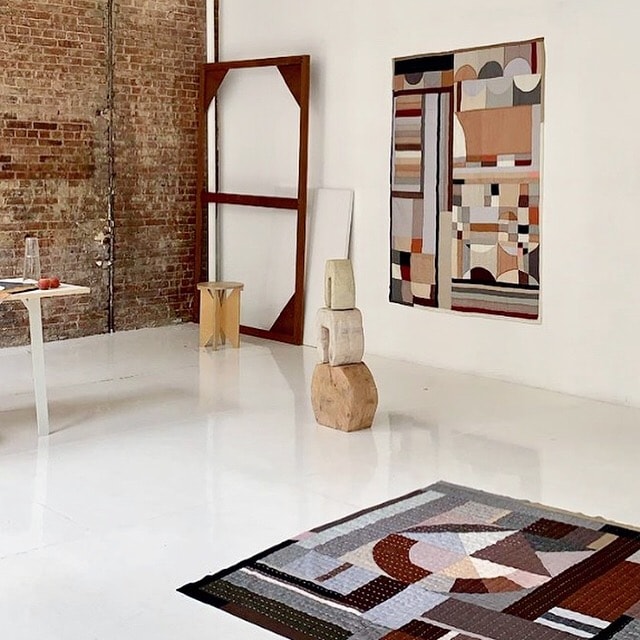


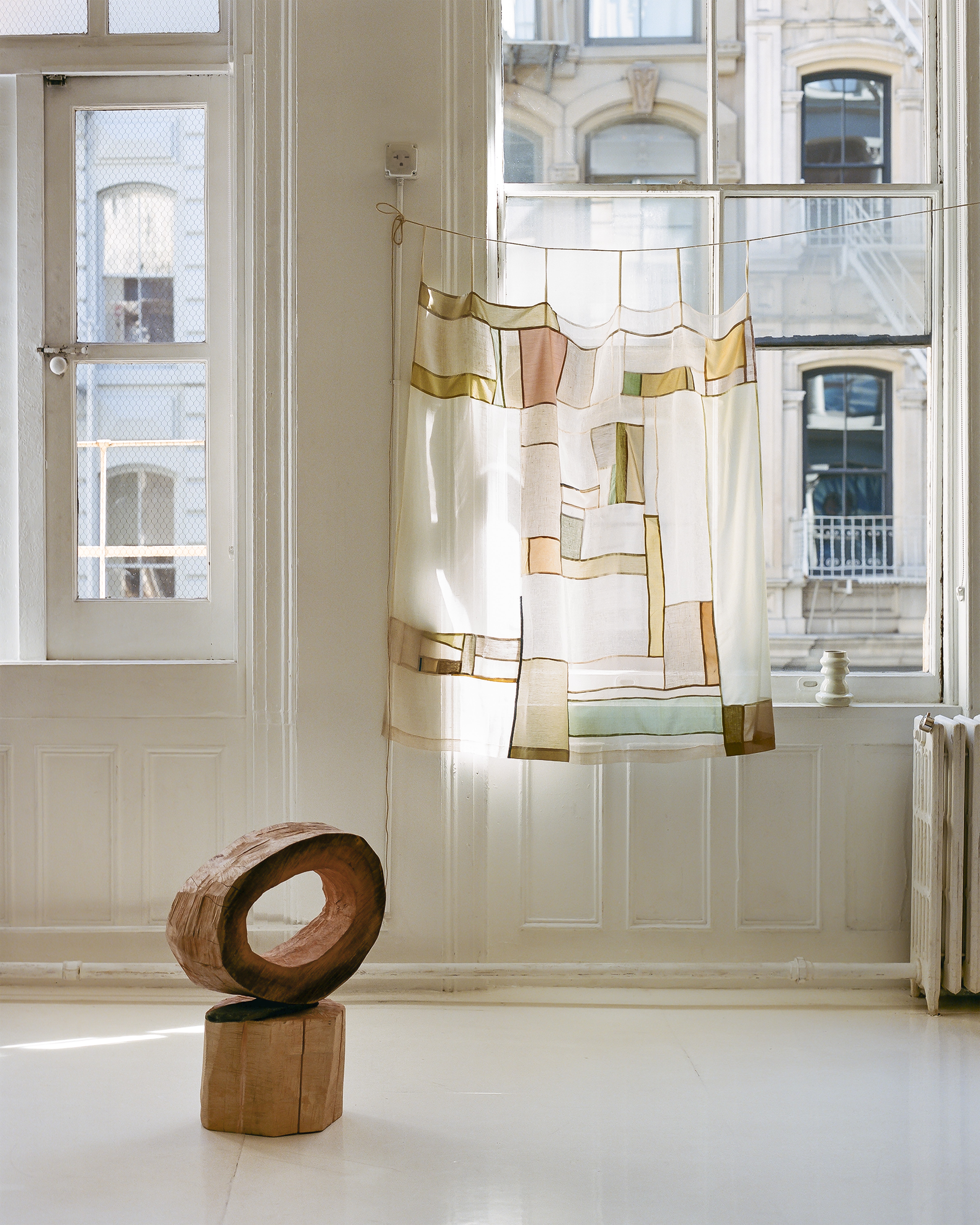

Photos courtesy of Thompson Street Studio.
Motnyk encourages participants through a creative process and said that workshop participants often send her photos of evolved works months or weeks later after the workshops as they continue to work on them at home:
"Two central values of Thompson Street Studio are engaging with the community and supporting textiles education. An integral part of this mission is taking part in New York Textile Month each year in different ways. It’s a great opportunity to work directly with people to share the value of our handmade textile heritage." Motnyk said.
